Surprisingly versatile, a black kitchen floor can be everything from quietly sophisticated to fearlessly graphic, depending on the material and pattern you choose. Recent design guides point out that dark flooring grounds a room, hides uneven subfloor lines, and makes pale cabinetry or metalwork pop, all while reading as timeless rather than trendy. Experts also note that black surfaces come in an impressive range—marble, slate, porcelain, terrazzo, sustainable cork, even rubber—so you can match durability, budget, and maintenance needs to your lifestyle. Below are twenty distinct ideas, each ready to anchor cabinetry, reflect light, or absorb it for cozy drama.
1. Dramatic Black Kitchen Floor in Luxe Marble Veining
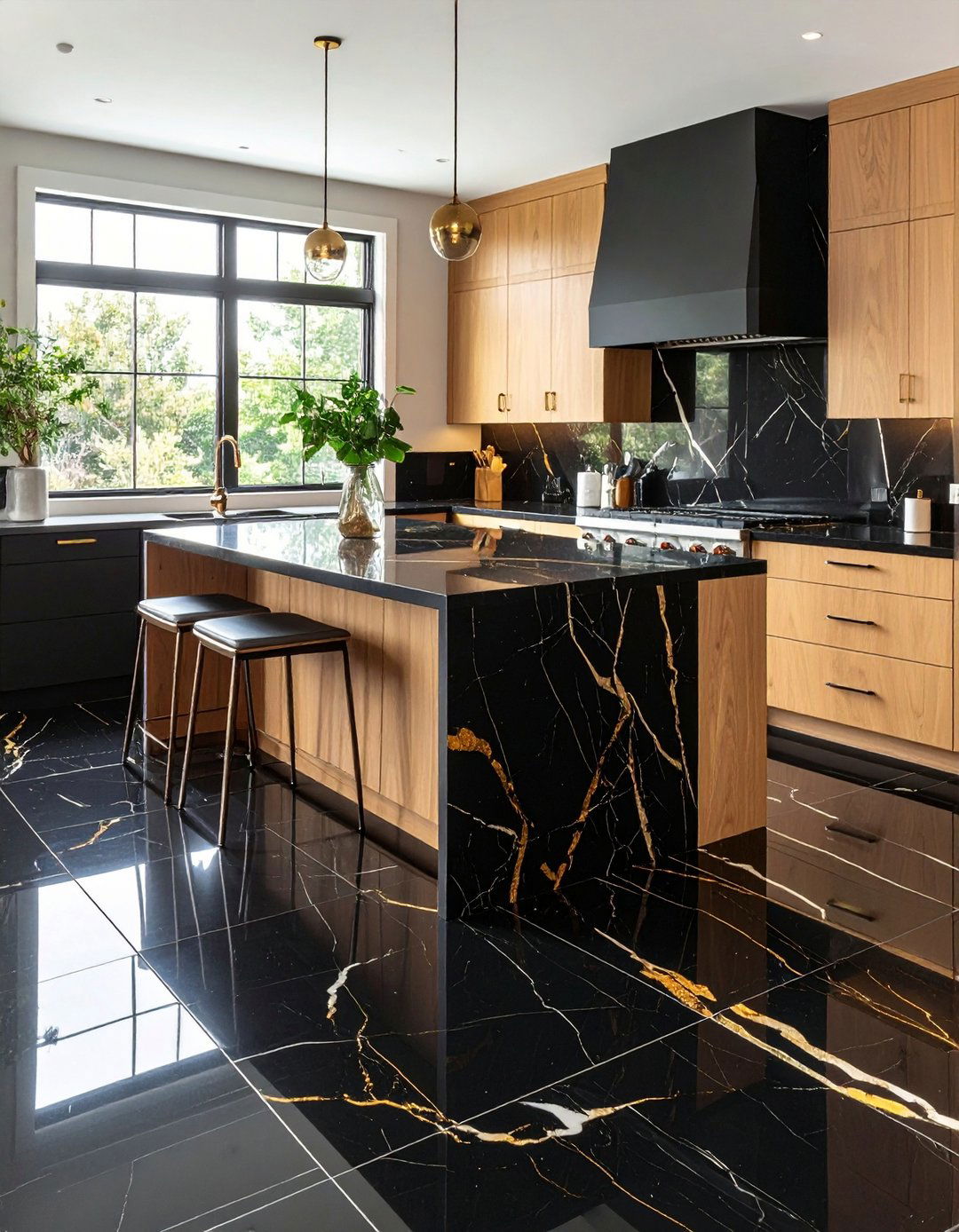
A dramatic black kitchen floor clad in large-format marble instantly signals high-end elegance. The stone’s white or gold veining breaks up the darkness, so the surface feels artful rather than heavy, while the polished finish bounces daylight deep into the room. Designers recommend specifying rectified edges for thinner grout lines that keep the pattern uninterrupted, then sealing once a year to prevent etching from citrus and red-wine splashes. Daily care is simpler than many assume—just a pH-neutral cleaner and a fluffy dust mop keep the reflective surface pristine. Pair with matte oak cabinetry to accentuate the gleam beautifully during evening.
2. Minimalist Matte Black Kitchen Floor with Porcelain Tiles
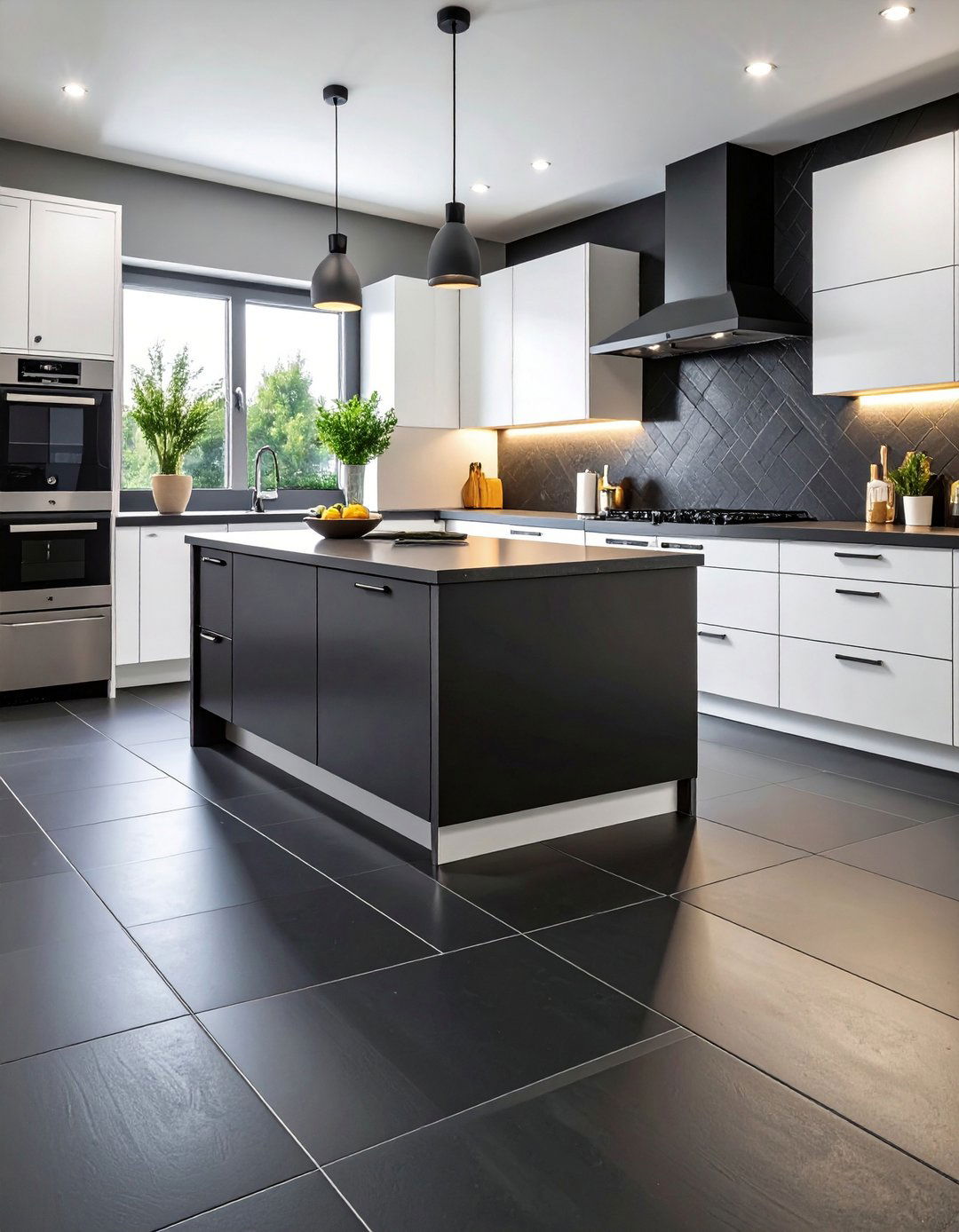
Minimalist cooks gravitate toward a matte black kitchen floor laid in affordable porcelain tiles because the surface is nearly bombproof yet visually calm. Unlike glossy finishes, the micro-texture disperses reflections, so the room photographs cleanly under any lighting—great for social-media recipe posts. Specialists note that matte porcelain earns top scores for scratch resistance and slip control, making it safer when olive-oil drips hit the ground. Installing a dark gray grout almost erases joint lines, creating an uninterrupted slab effect without the cost of stone. Vacuum once a week and damp-mop with mild detergent; no sealing or polish required—perfect for busy households.
3. Light-Boosting Glossy Black Kitchen Floor Tiles
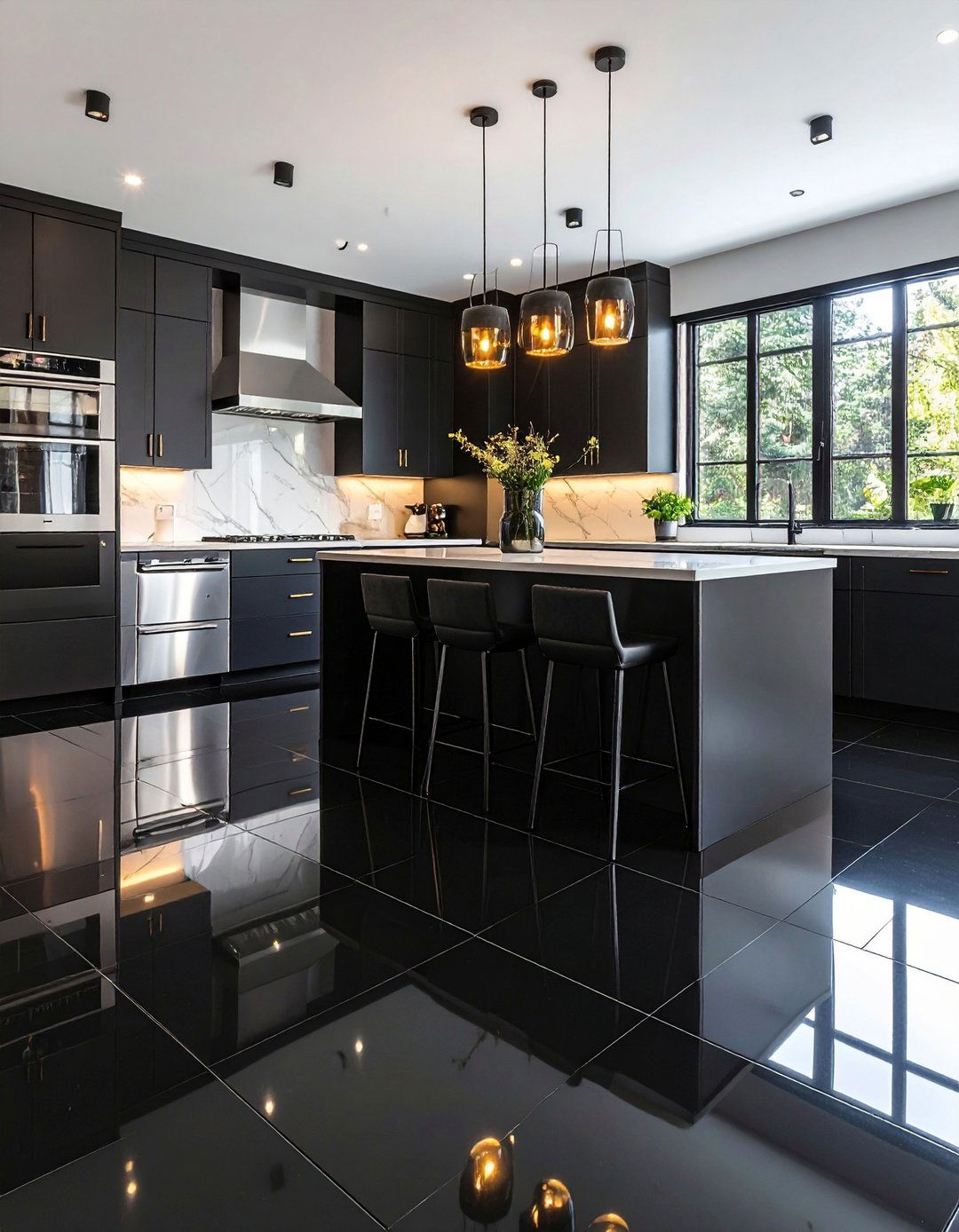
With a high-gloss glaze, a black kitchen floor can actually brighten the space by reflecting ambient and task lighting like a subtle mirror. Interior trend reports argue that glossy black tiles act as a visual amplifier, doubling pendant-light sparkle and making stainless appliances feel custom-grade. Choose rectified porcelain or glass-backed ceramic in large formats to reduce joints and maximize shine, but specify an anti-slip rating of R9 or above to ensure wet feet stay stable. Regular sweeping keeps dust from dulling the lacquered surface; every few weeks a microfiber mop and a drop of gentle dish soap restore that inky depth.
4. Character-Rich Black Kitchen Floor in Stained Hardwood

Stained hardwood delivers a black kitchen floor that feels warm underfoot and ages gracefully, showing subtle grain even through the dark pigment. Flooring specialists recommend white-oak or maple planks because their tight pores accept ebony stain evenly without patchiness, and a satin polyurethane topcoat diffuses glare for a heritage vibe. Scratches blend into the natural texture, and you can always buff and recoat instead of full sanding—handy for families with dogs. Layering a natural jute runner along the prep zone softens acoustics while letting the timber’s knots peek through. Monthly vacuuming and occasional hardwood cleaner keep the patina rich alive.
5. Rustic Charcoal Slate Black Kitchen Floor Charm
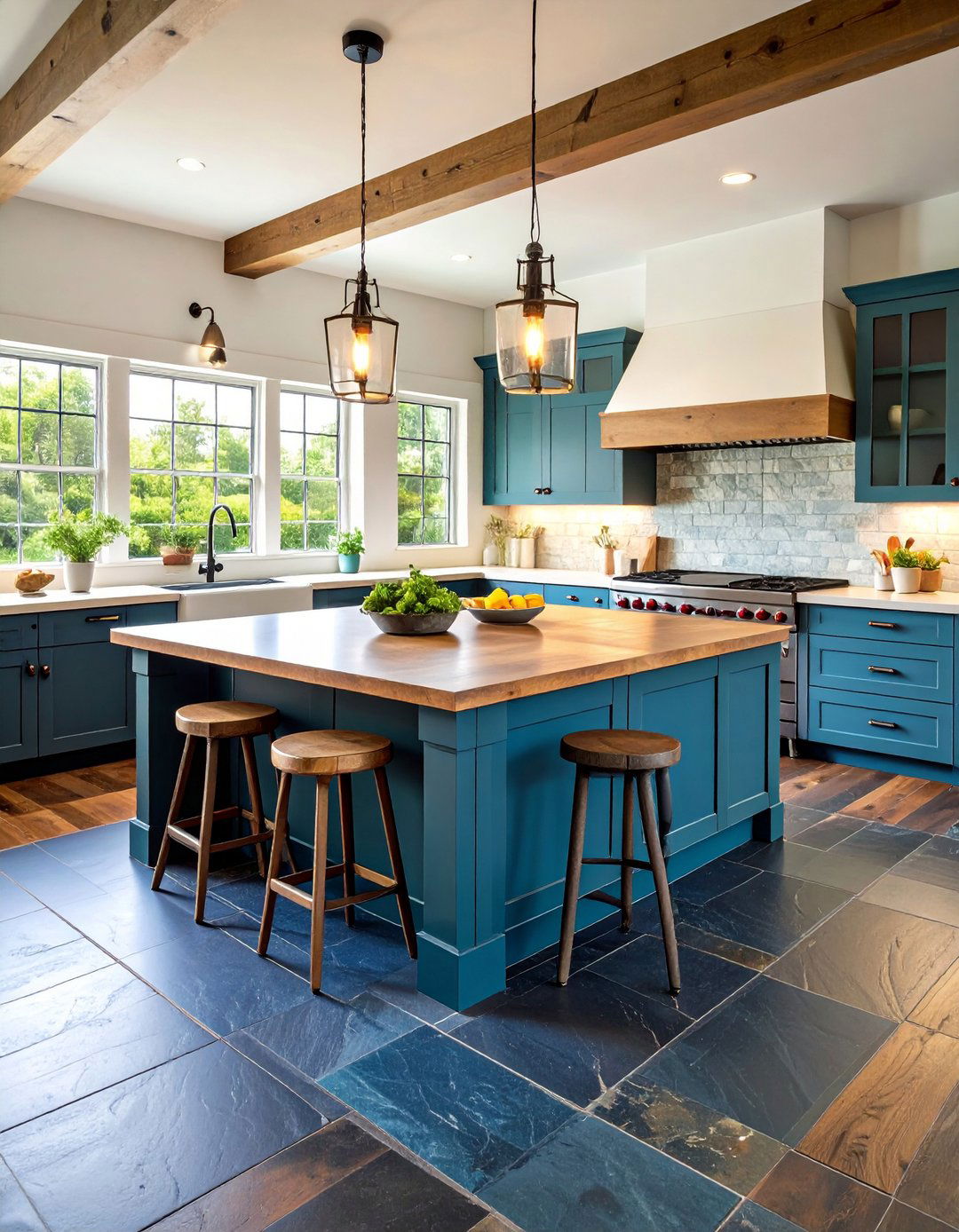
Charcoal slate creates a black kitchen floor that channels farmhouse authenticity yet works in modern settings thanks to its finely cleft texture. Designers love the soft color variation—ink, graphite, and smoky blue—that disguises crumbs between washes and lends organic movement to otherwise minimalist cabinetry. When paired with limewashed walls or butcher-block counters, slate’s earthy matte surface looks hand-hewn, but it also accepts honed finishes for an easier sweep. Seal annually to resist oil splatter, and mop with stone-safe soap; the dense material shrugs off dropped cast-iron pans. Radiant heat coils below amplify slate’s natural conductivity, keeping toes warm on winter mornings.
6. Industrial Polished Concrete Black Kitchen Floor
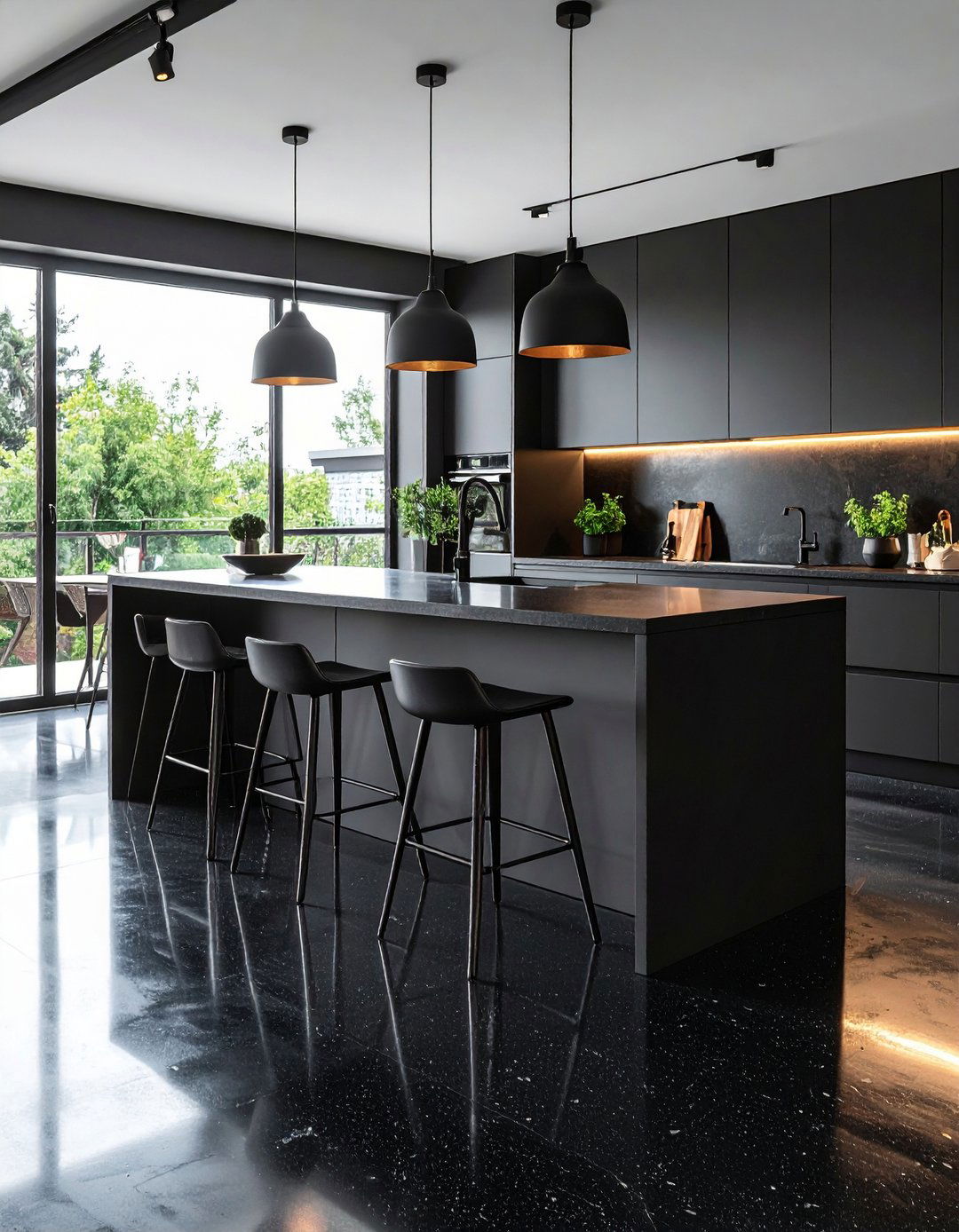
An industrial-inspired black kitchen floor poured in polished concrete delivers durability on a budget and looks sharper each time the surface is buffed. Extensive tests show polished slabs shrug off knife drops, rolling stools, and pet claws while requiring nothing more than a damp microfiber pad for cleanup. A penetrating densifier makes the concrete dense enough to resist staining, and the reflective sheen sends daylight bouncing around, counterbalancing dark cabinetry. You can tint the top layer with black oxide during pouring or work dye into the grind for a subtler charcoal effect. Pair with radiant heat coils to prevent that infamous chill.
7. Playful Speckled Terrazzo Black Kitchen Floor
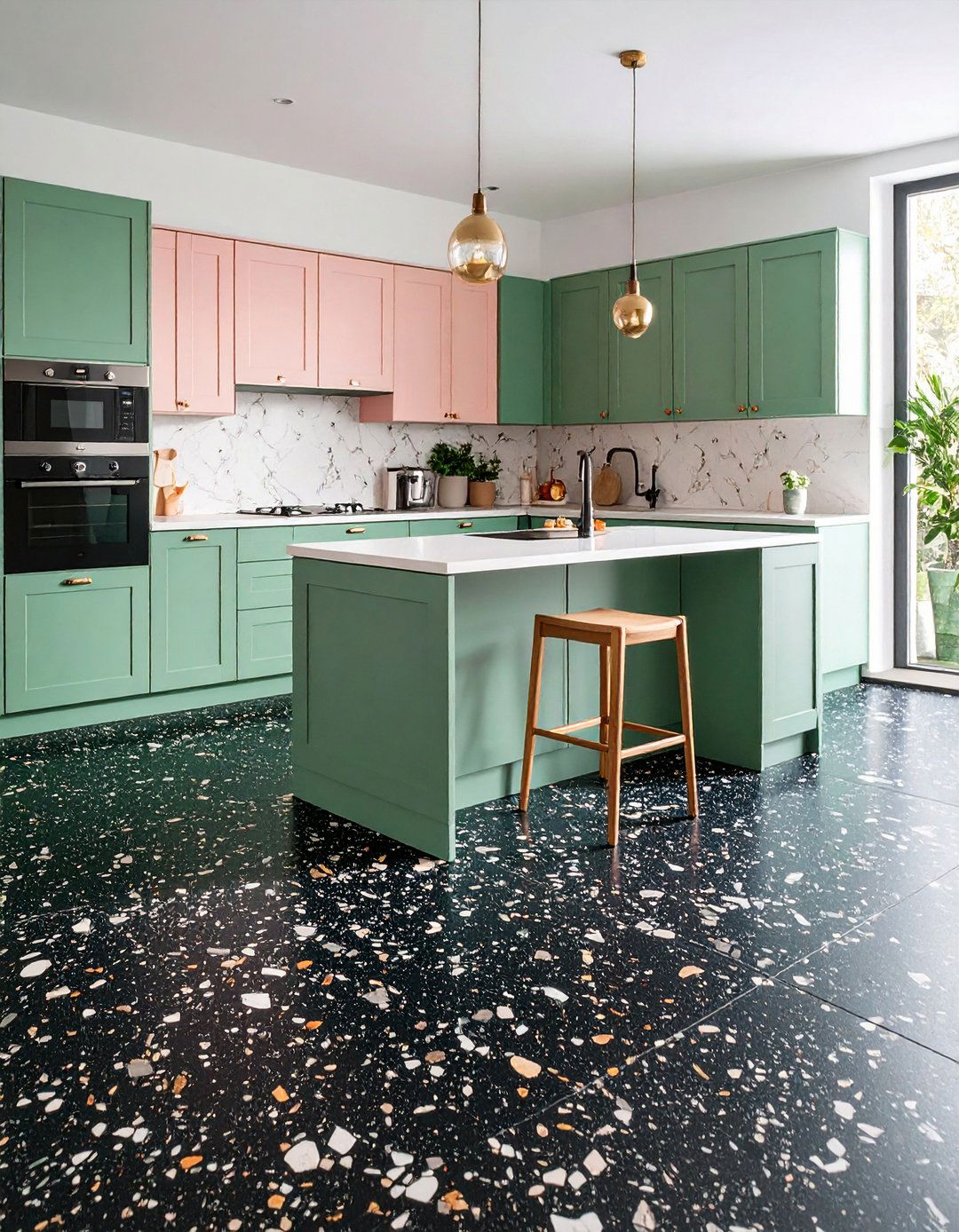
A terrazzo black kitchen floor scatters light-colored marble or quartz chips through dark cement or epoxy, creating playful confetti that hides crumbs between cleaning sessions. Trend forecasters highlight terrazzo’s comeback because the mix can be pre-cast in slim tiles, poured on site for seamless spans, or even ordered as low-VOC epoxy for retrofit projects. The speckling visually softens the darkness, making the floor pair effortlessly with colored cabinets—sage, blush, or clay—without feeling busy. Seal twice during the first year to close capillaries, then refresh annually; many homeowners enjoy decades of service thanks to the aggregate’s inherent hardness and reparability factor.
8. Timeless Checkerboard Black Kitchen Floor Styling
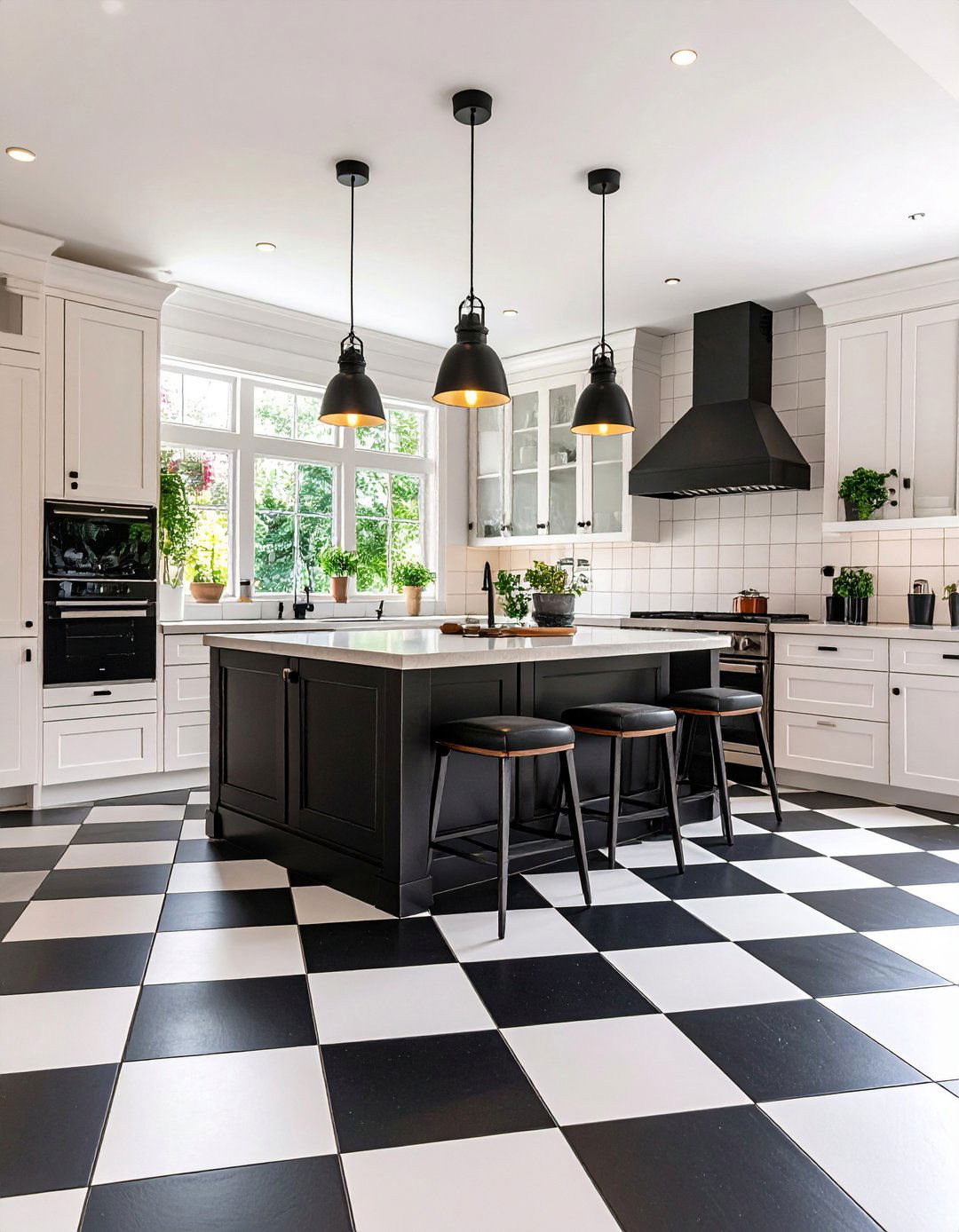
Nothing says Parisian bistro quite like a black kitchen floor laid in classic checkerboard with white squares. The alternating pattern immediately defines the cooking zone and visually widens narrow galley layouts by drawing the eye from side to side. Designers recommend 12- to 18-inch tiles to keep the composition refined, or oversized 24-inch slabs for a contemporary twist. Because only half the field is black, the floor achieves strong contrast without darkening the whole space, making it a friendly choice for north-facing rooms. Use charcoal grout to minimize maintenance and consider a honed finish for slip resistance under wet feet.
9. Dynamic Herringbone Black Kitchen Floor Layout
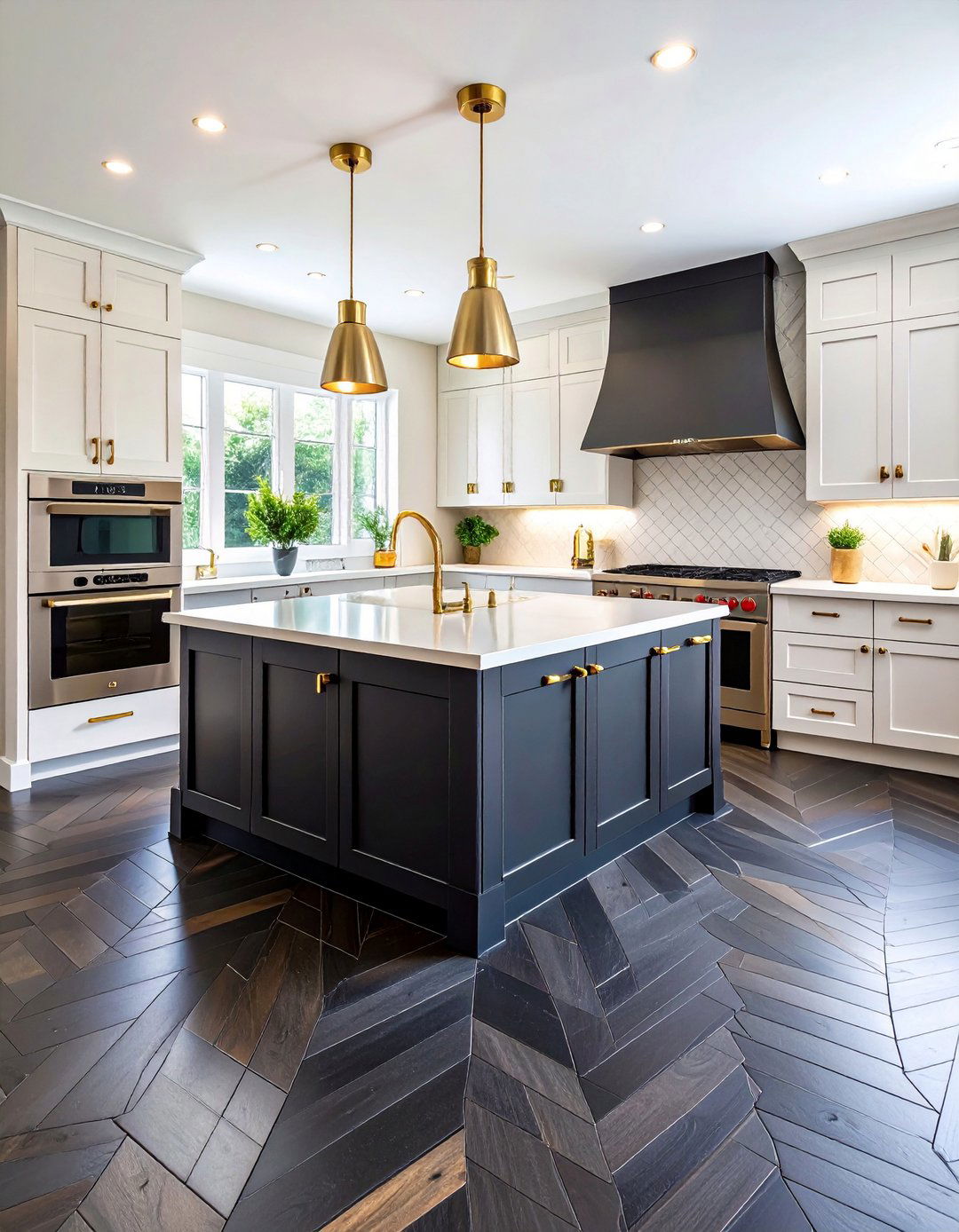
Lay slim rectangular tiles in a herringbone pattern for a black kitchen floor that feels in motion even when the room stands still. The zigzag geometry adds instant craftsmanship and disguises the inevitable scuffs that run parallel to well-traveled paths. Prefabricated porcelain herringbone mosaics on mesh backers simplify installation; simply press the sheets into thin-set and grout with charcoal to erase joints. Experts advise choosing a matte finish so the pattern leads the eye instead of glare, and under-tile membranes absorb minor subfloor movement, preventing hairline cracks. Combine with shaker cabinets and brass hardware for an elevated twist on tradition.
10. Soft Eco-Friendly Cork Black Kitchen Floor
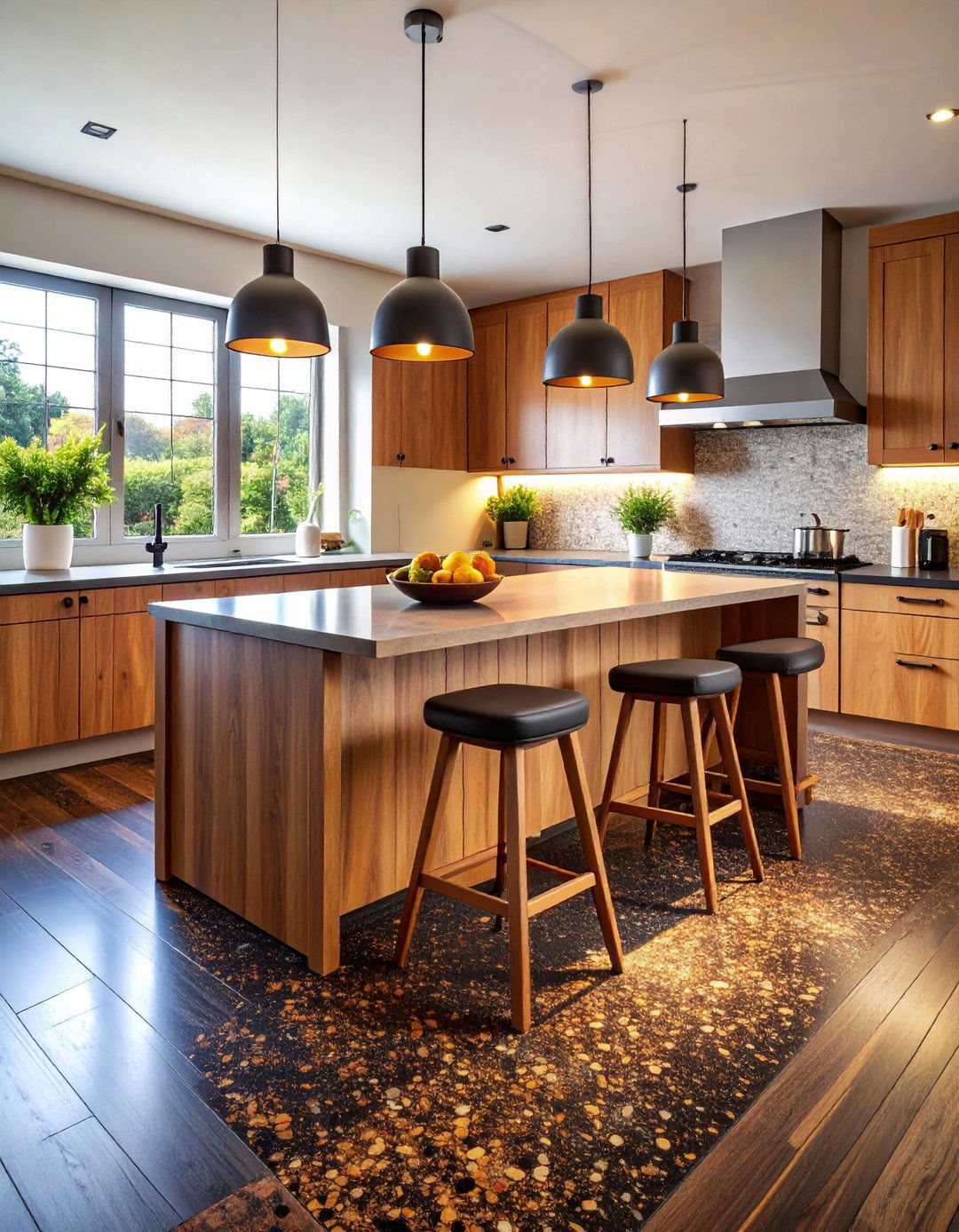
Home chefs who stand for hours appreciate a black kitchen floor made from cork, a springy bark harvested without felling trees. Microscopic air pockets inside each plank provide gentle cushioning, reducing leg fatigue, while natural resins repel insects and minor spills. Manufacturers now offer deep-dyed, UV-cured finishes that lock pigment into the surface, so the rich charcoal tone resists fading even under skylights. Seal with water-based polyurethane every five to seven years for moisture defense, and place felt pads under stools to prevent dents. If a section does scratch, you can sand and touch up just that tile instead of replacing the floor.
11. Sustainable Marmoleum Black Kitchen Floor Resilience

Marmoleum, the modern form of linoleum, yields a black kitchen floor that is surprisingly climate-positive: linseed oil, wood flour, and jute naturally lock more carbon than they emit during manufacture. Because the material is antistatic, dust and pet hair sweep away in seconds, making it a friend to allergy sufferers. Choose click-together planks for weekend installation or sheet goods for a watertight membrane under dishwashers. While the matte surface hides micro-scratches, it can be refreshed with a specialty polish after several years, avoiding landfill waste. Sustainability aside, the silky texture is warm underfoot, especially if you install it over quiet-walk acoustic underlayment.
12. Slip-Resistant Rubber Black Kitchen Floor for Busy Homes
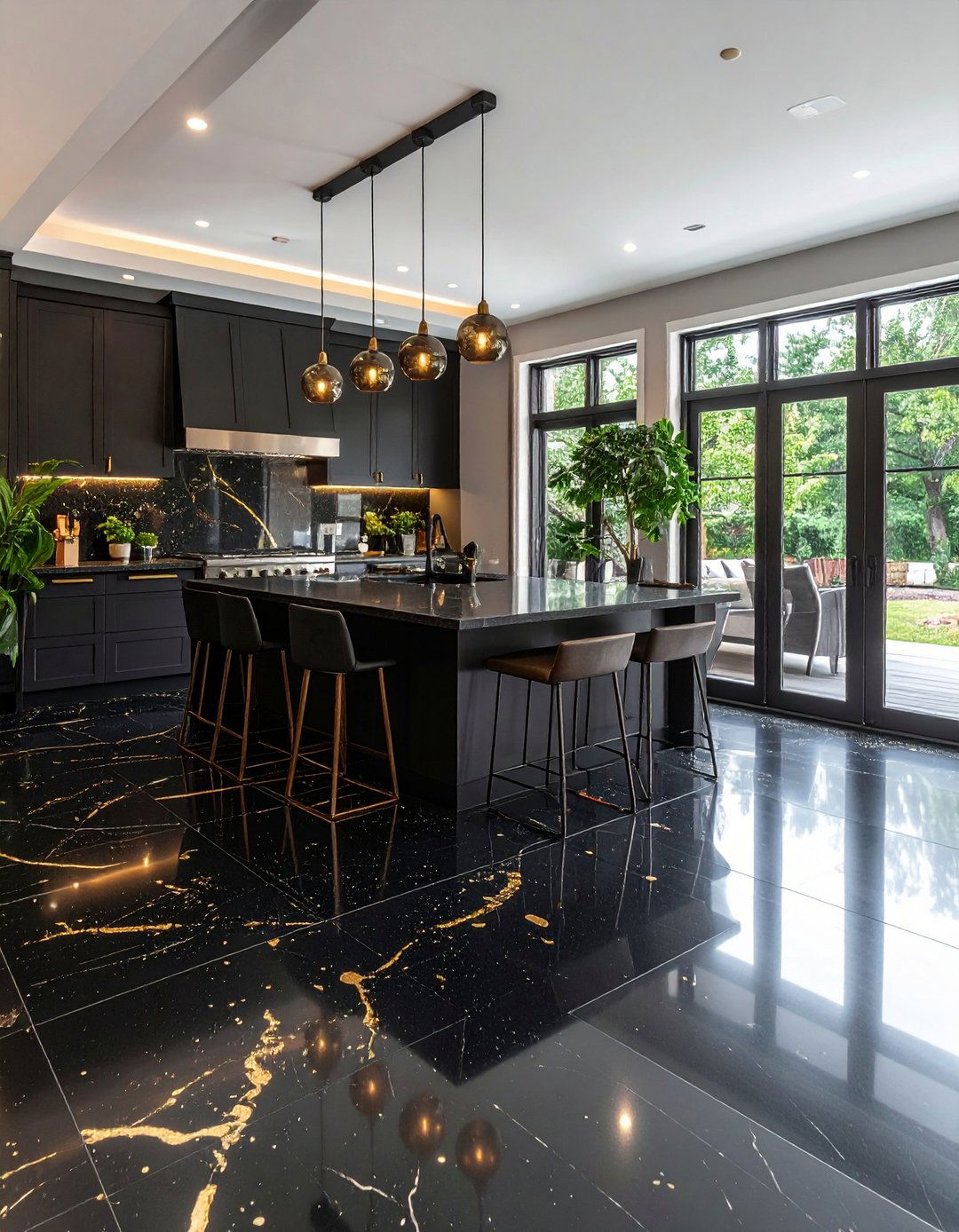
When toddlers, pets, or party crowds rule, a black kitchen floor made from commercial-grade rubber delivers unmatched grip. The material’s coin or diamond textures channel spilled water toward drains and provide traction even when barefoot, meeting many safety codes. Shock-absorbing qualities lower dropped-glass breakage rates, and the slight give makes marathon meal prep easier on knees. Manufacturers now mold planks with subtle marbling that disguises smudges yet reads cleaner than industrial mats. Maintenance is uncomplicated: vacuum crumbs, then wipe with a neutral-pH cleaner—no waxing needed. For open-plan spaces, order rubber in 10-foot-wide sheets to minimize seams under islands.
13. Geometric Hexagonal Black Kitchen Floor Tiles
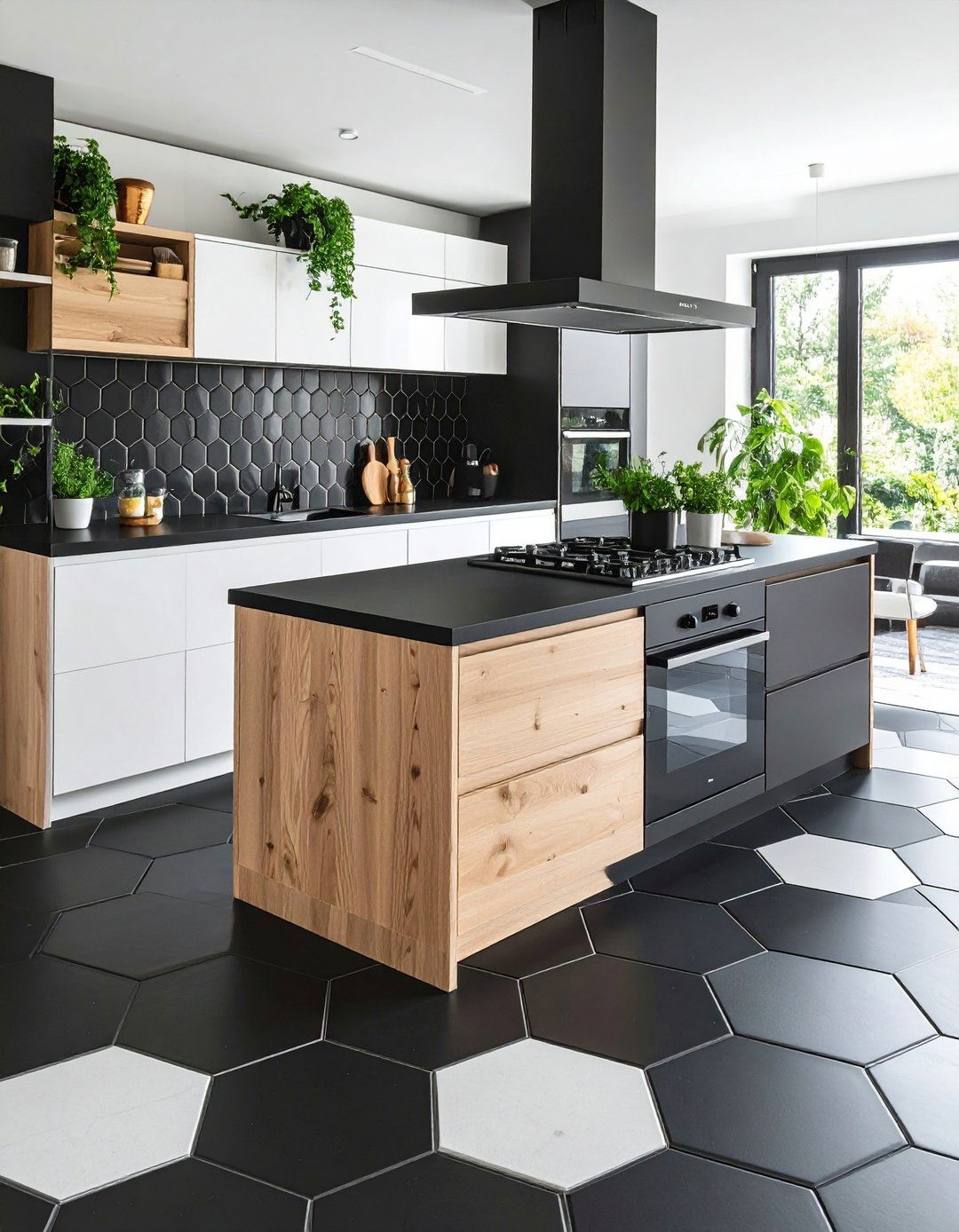
Hexagonal tiles turn a black kitchen floor into a geometric statement reminiscent of honeycomb or basalt columns. Whether you choose 4-inch porcelain for a subtle texture or oversized 10-inch encaustic cement for graphic punch, the shape naturally breaks joint lines, helping the surface read as a continuous carpet of stone. Designers suggest mixing three slightly different sheens—matte, satin, and gloss—in the same palette to catch light in unexpected ways without adding color. Large rooms benefit from laying the hexes point-to-point across the width, which visually stretches the floor plan. A penetrating sealer finished with beeswax deepens the inky tone.
14. Tactile Penny Round Black Kitchen Floor Mosaic
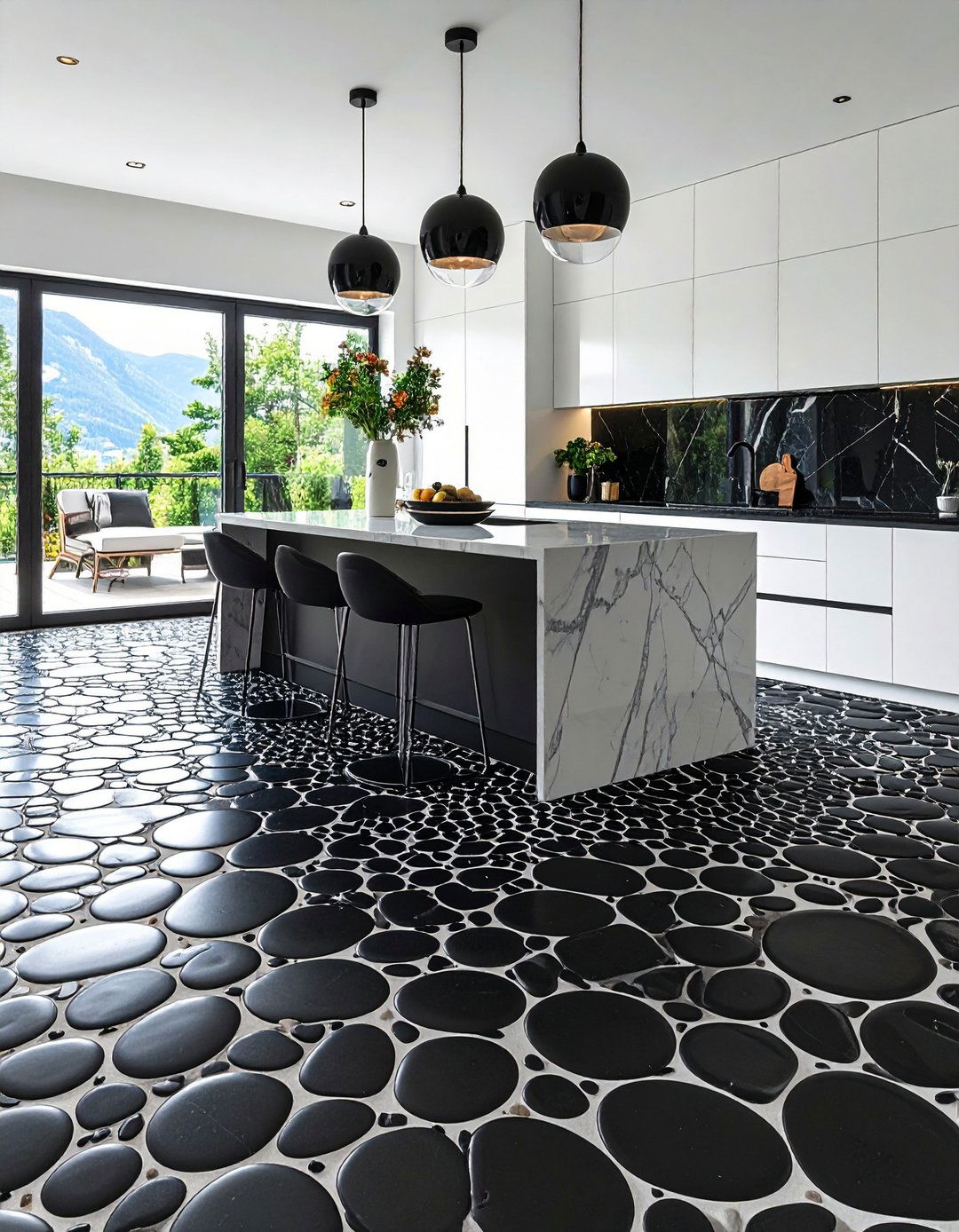
Penny-round mosaics cover a black kitchen floor in thousands of tiny circles that feel almost spa-like under bare feet. Because each tile is less than an inch across, the grout network adds natural slip resistance—chefs can hustle from sink to stove without worrying about splashes. Choose a honed basalt or matte porcelain if you want understated elegance, or polished marble for reflective glamour. Designers often run the same penny rounds up the island waterfall to blur floor and furniture. Cleaning is simple: vacuum weekly, then spray a stone-safe cleaner and squeegee; the tiny domes drain quickly after busy pasta nights.
15. Budget Peel-and-Stick Vinyl Black Kitchen Floor Planks
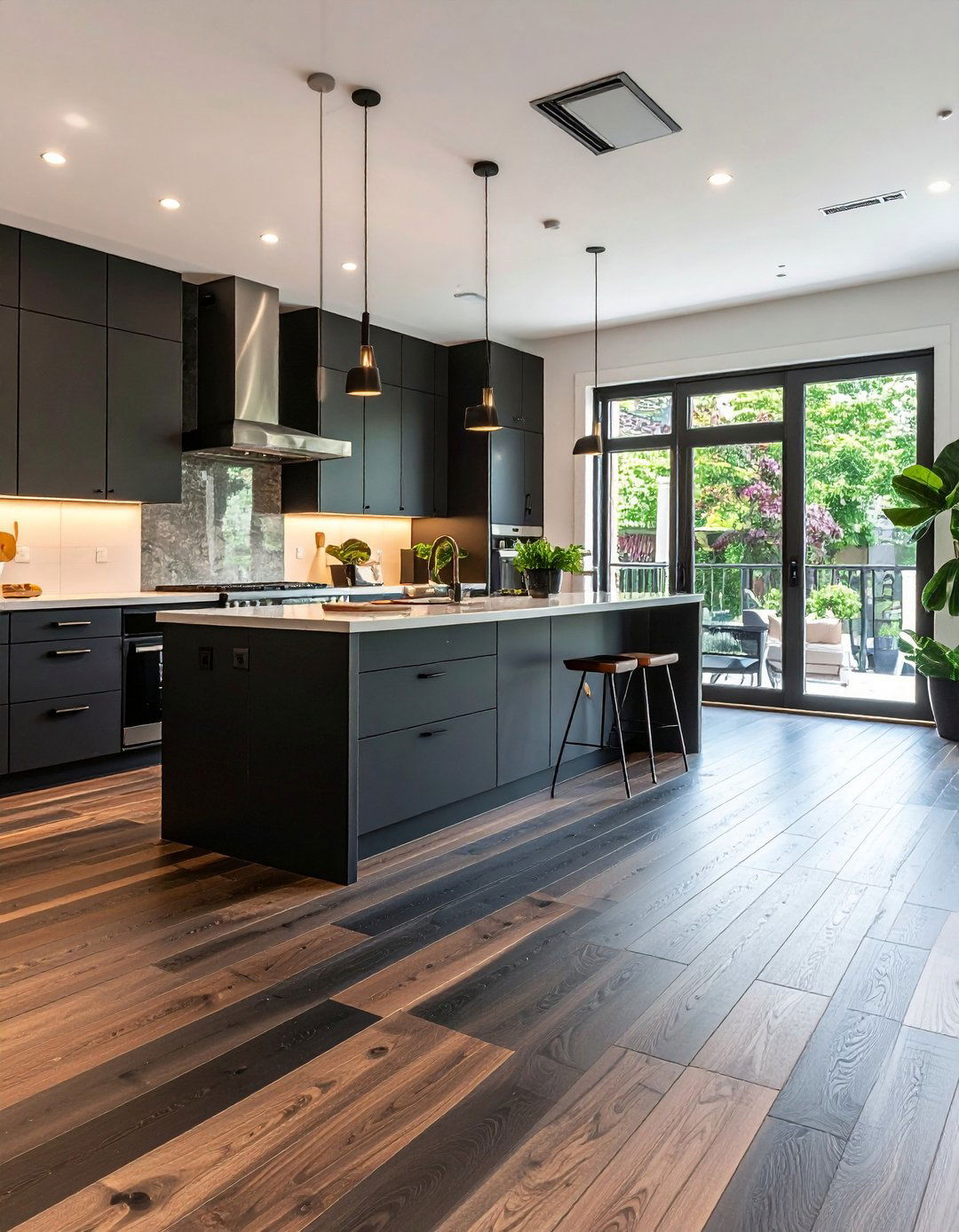
Renters craving style can install a black kitchen floor in a single afternoon using peel-and-stick vinyl planks. Modern adhesives grip tightly to clean subfloors, yet release with gentle heat when it’s time to move, leaving deposits intact. Manufacturers print convincing wood or slate textures in deep ebony so seams practically disappear once the pattern repeats. The 5-millimeter core cushions footsteps and damps noise—useful in upstairs flats—while a factory sealer resists standing water for up to 24 hours, buying time to wipe spills. Sweep daily and occasionally mop with warm water; harsh chemicals might cloud the photographic film over the years.
16. Waterproof LVT Slate-Look Black Kitchen Floor
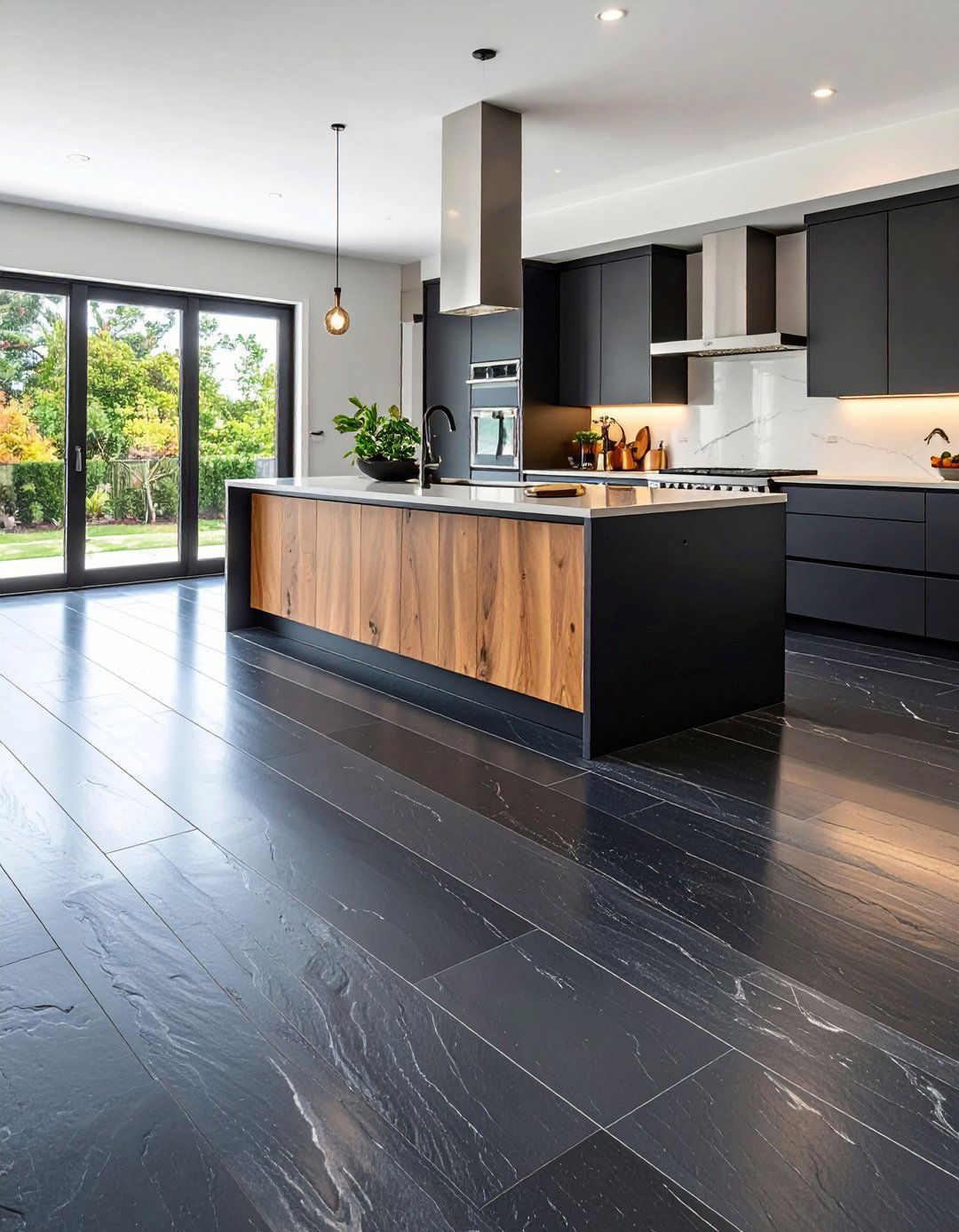
Luxury vinyl tile (LVT) lets you enjoy the moody charisma of a slate-look black kitchen floor without the weight or upkeep of natural stone. Core layers are fused under heat to create a 100 percent waterproof plank that shrugs off melting ice from the freezer drawer. Embossed-in-register texturing syncs microscopic grooves with the printed slate face, tricking both eyes and fingertips. Install as a floating click system over existing ceramic, trimming doors rarely. Designers favor extra-long 48-inch planks laid staggered to mimic quarry clefts while visually elongating small rooms. Simply vacuum and spot-clean—no sealing, special pads, or expansive budgets needed here.
17. Reflective Glass-Inlaid Black Kitchen Floor Accents
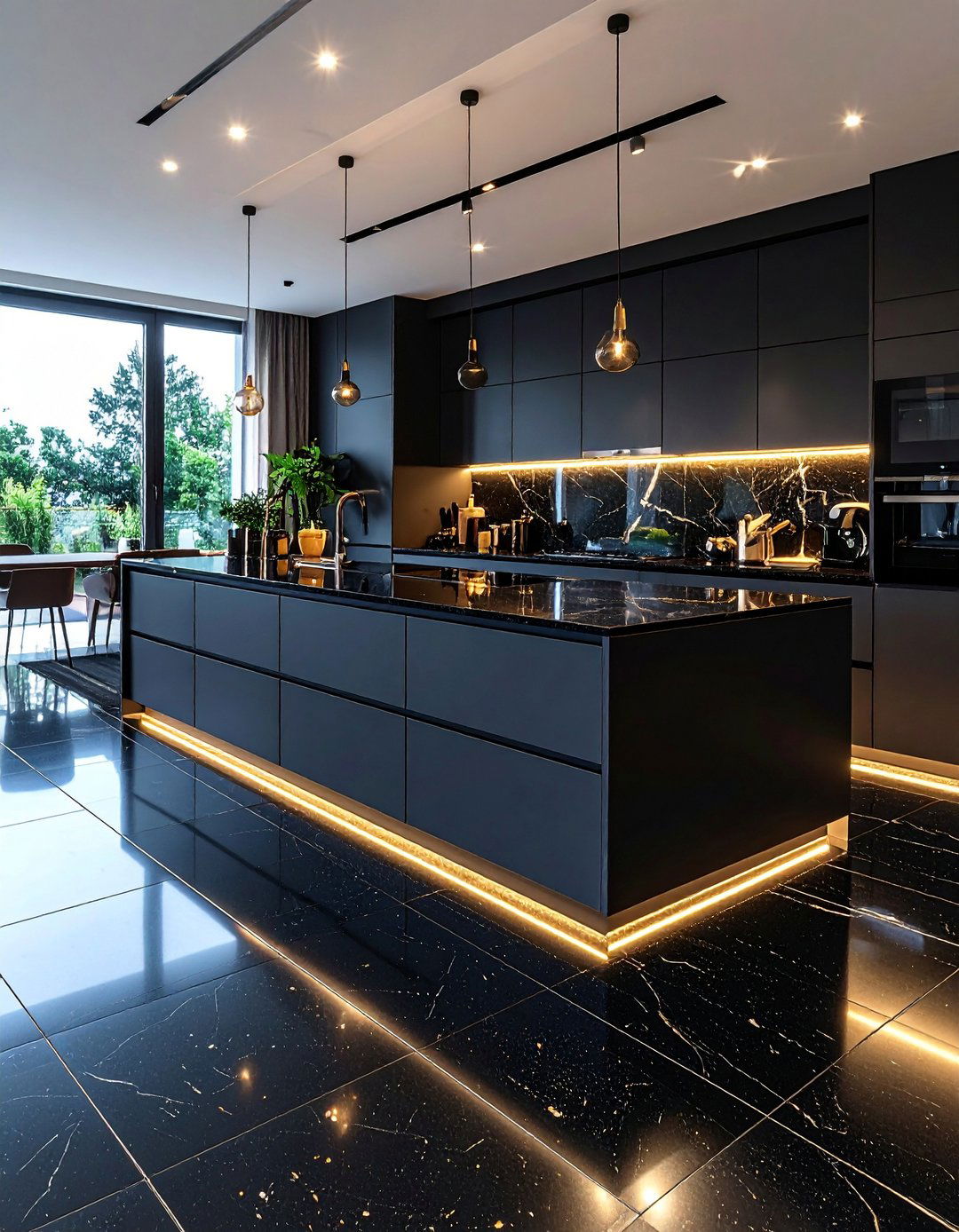
For homeowners who crave subtle sparkle, a black kitchen floor dotted with glass-inlaid tiles offers jewelry-box glamour. Small strips of metallic or smoked mirror glass are factory-embedded into porcelain field pieces, so installation mirrors standard tile work yet delivers flashes of light each time you walk by. The effect amplifies under-cabinet LEDs and makes midnight snack trips a little theatrical. Designers caution using the inlay sparingly—perhaps as a border around the island—to avoid a disco vibe. Sweep with a soft broom; avoid abrasive pads that might micro-scratch the glass facets and preserve its mirrorlike gleam for many gatherings.
18. Vintage Encaustic Black Kitchen Floor Patterns
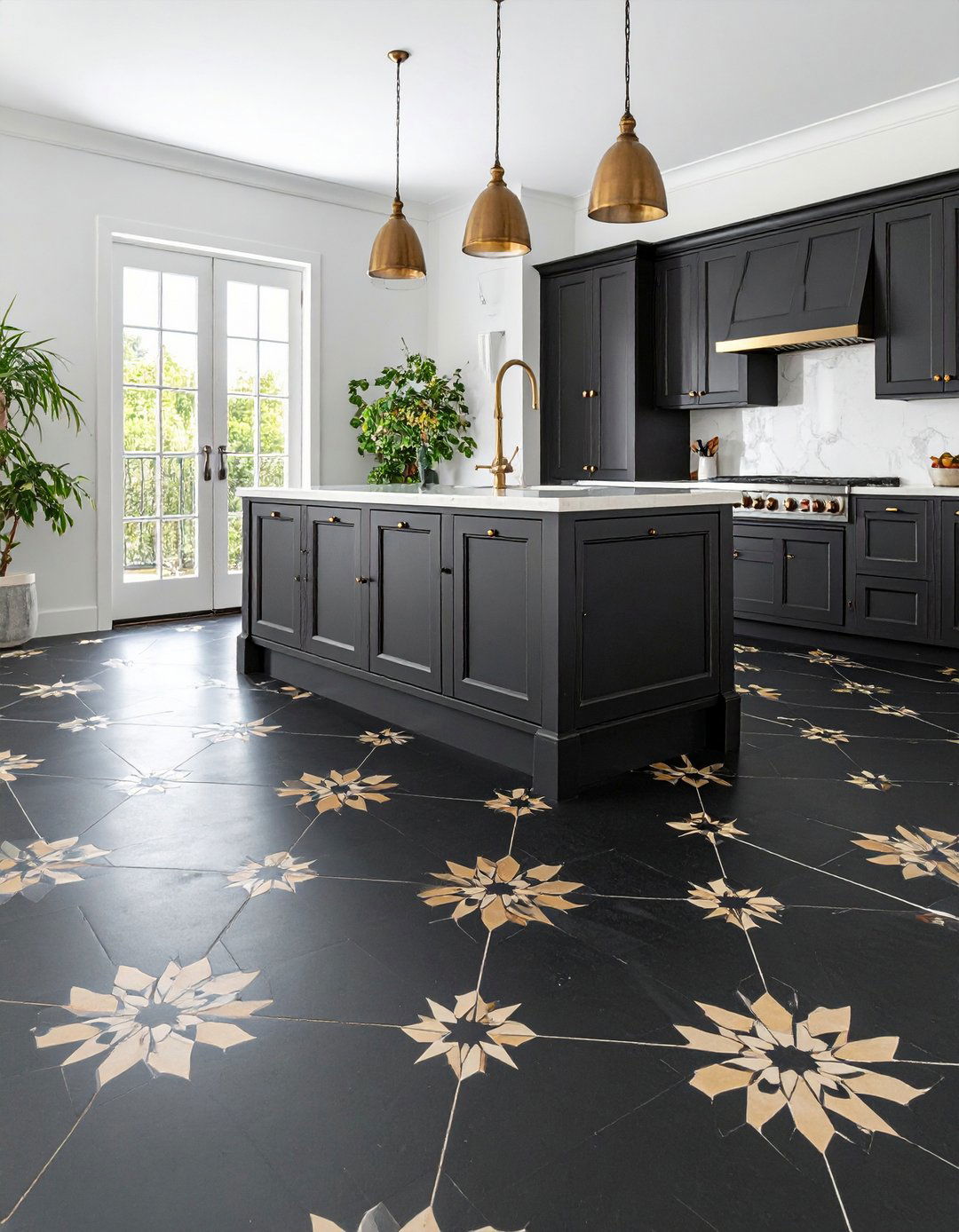
Encaustic cement tiles let you press traditional motifs—stars, florals, Moorish curves—into a black kitchen floor, yielding an instant sense of heritage even in new builds. Pigmented clay is packed into patterned molds, then hydraulically compressed, so the design layer runs several millimeters deep and can be refinished decades later. Many modern makers offer monochrome palettes: chalky ivory lines set against midnight backgrounds read crisp but subtle, ideal for small apartments. Because cement is porous, install a penetrating sealer, followed by a beeswax topcoat that enriches the color and adds gentle sheen. Acidic cleaners are off-limits; instead use pH-neutral soap-flakes only.
19. Rustic-Luxe Light Cabinet & Black Kitchen Floor Contrast
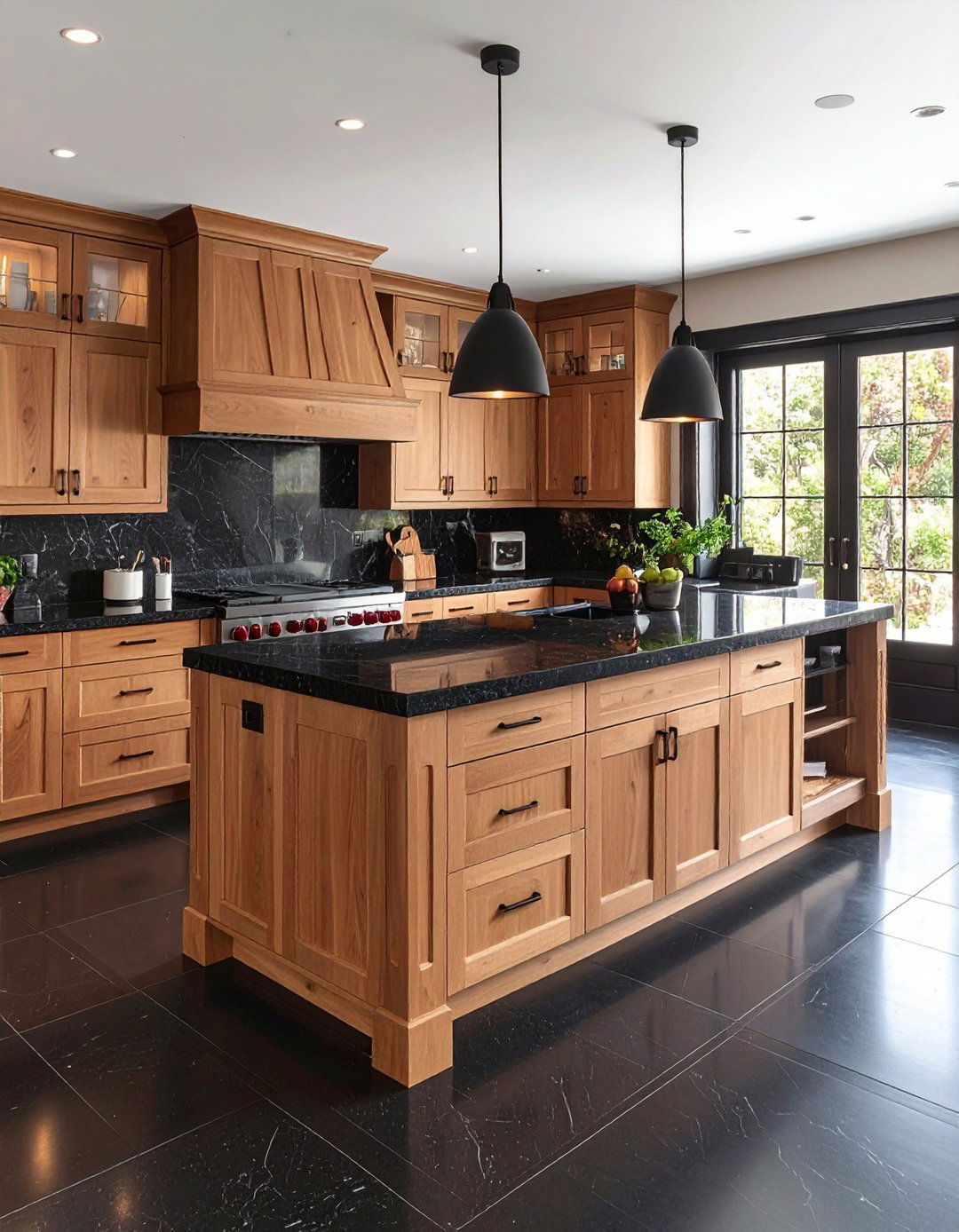
One of the easiest ways to make a black kitchen floor feel intentional rather than stark is to pair it with light, furniture-style cabinetry—think pale oak slab fronts or creamy rift-sawn ash. The contrast, praised in recent celebrity remodels, highlights grain patterns and makes hardware gleam like jewelry against a matte backdrop. Floating shelving in the same timber connects upper and lower planes, while a dark stone waterfall island anchors the composition. Designers suggest overstating texture—fluted drawer faces, hand-turned bar stools—to keep the space tactile and inviting. Install warm white LEDs below cabinets to bounce light onto the inky surface.
20. Cozy Heated Stone Black Kitchen Floor Comfort

Finish the list with pure comfort: a black kitchen floor in heated natural stone keeps socks optional even on January mornings. Stone’s high thermal mass lets radiant coils run at gentle temperatures yet release steady warmth for hours, so energy bills stay in check. Specialists explain that evenly distributed heat also eliminates cold spots common beneath tall islands, making prep more pleasant during marathon bake days. Because radiant systems don’t blow air, dust circulation drops—good news for allergy sufferers. Use a programmable thermostat to bring the tiles to 25 °C just before breakfast, then coast on stored heat until lunch.
Conclusion:
From polished marble grand statements to peel-and-stick vinyl quick wins, a black kitchen floor can fit almost any aesthetic, budget, or lifestyle. Dark surfaces ground open-plan layouts, make metallic fixtures shine, and—when chosen wisely—prove as easy to live with as lighter hues. Remember to balance sheen and slip resistance, seal absorbent materials on schedule, and play with pattern to control how light moves across the room. Whether you lean rustic with slate, eco-smart with Marmoleum, or ultra-modern with concrete, the right black foundation turns everyday cooking into a design moment that endures long after trends fade. Just plan lighting thoughtfully and your floor always feels welcoming.


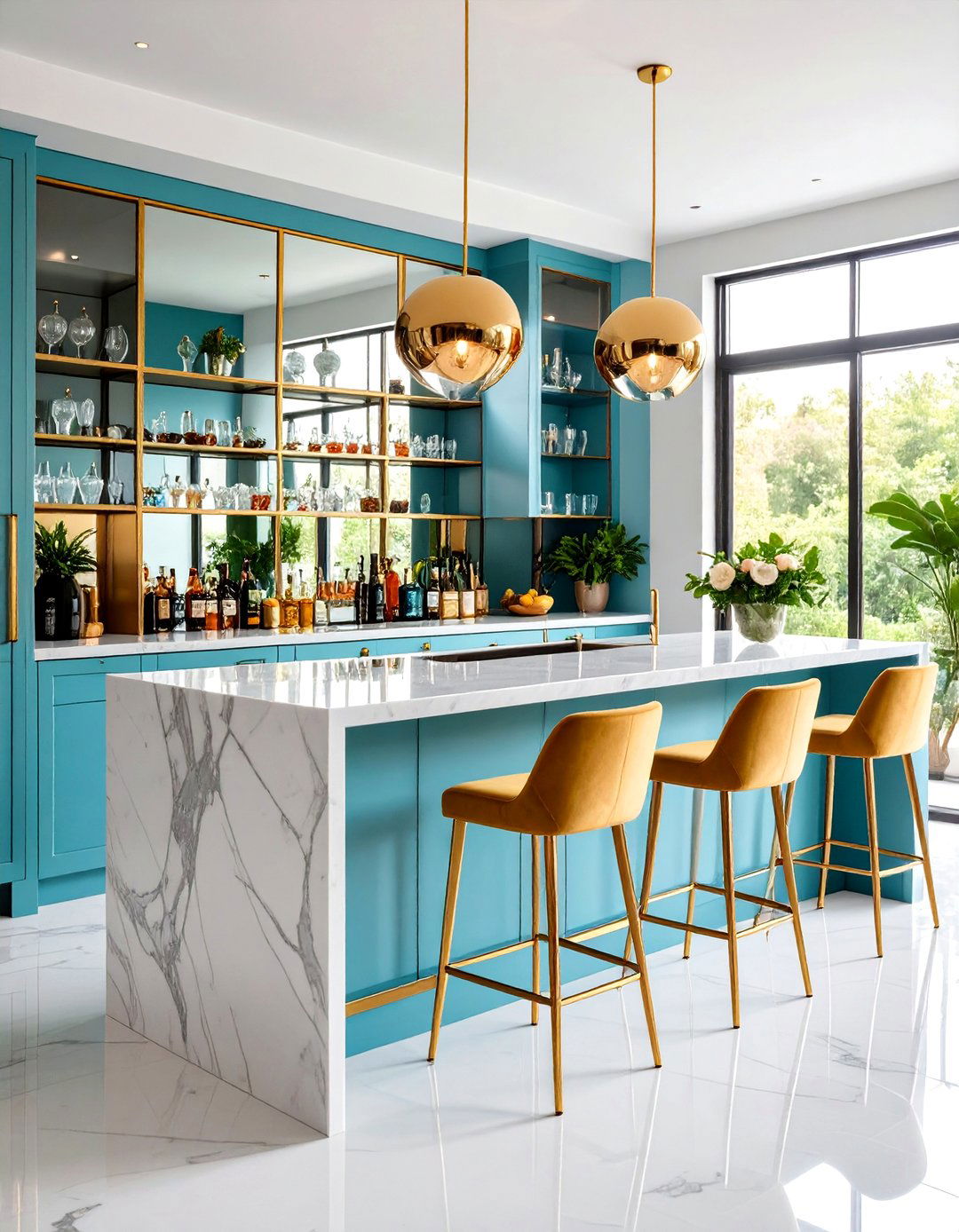
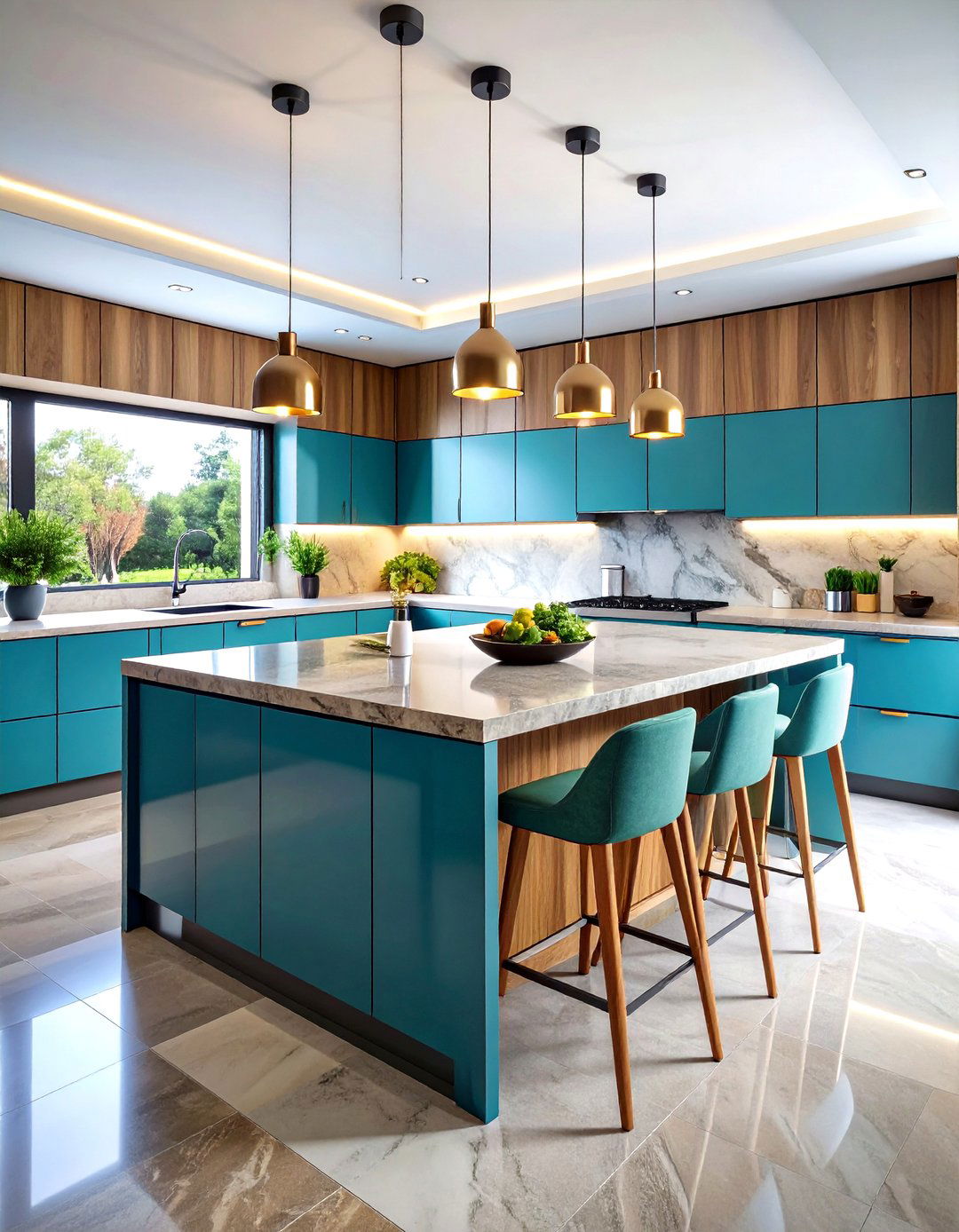
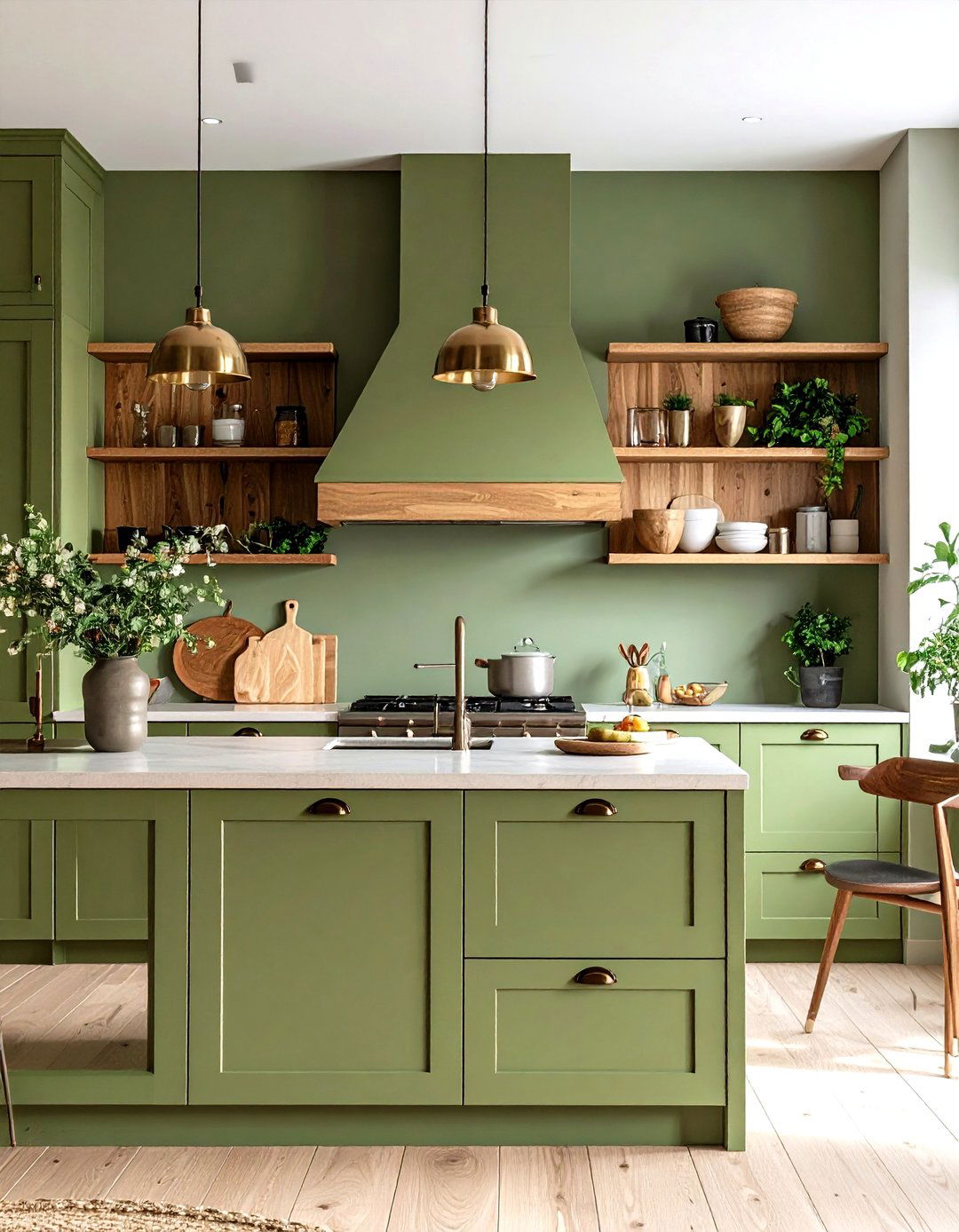

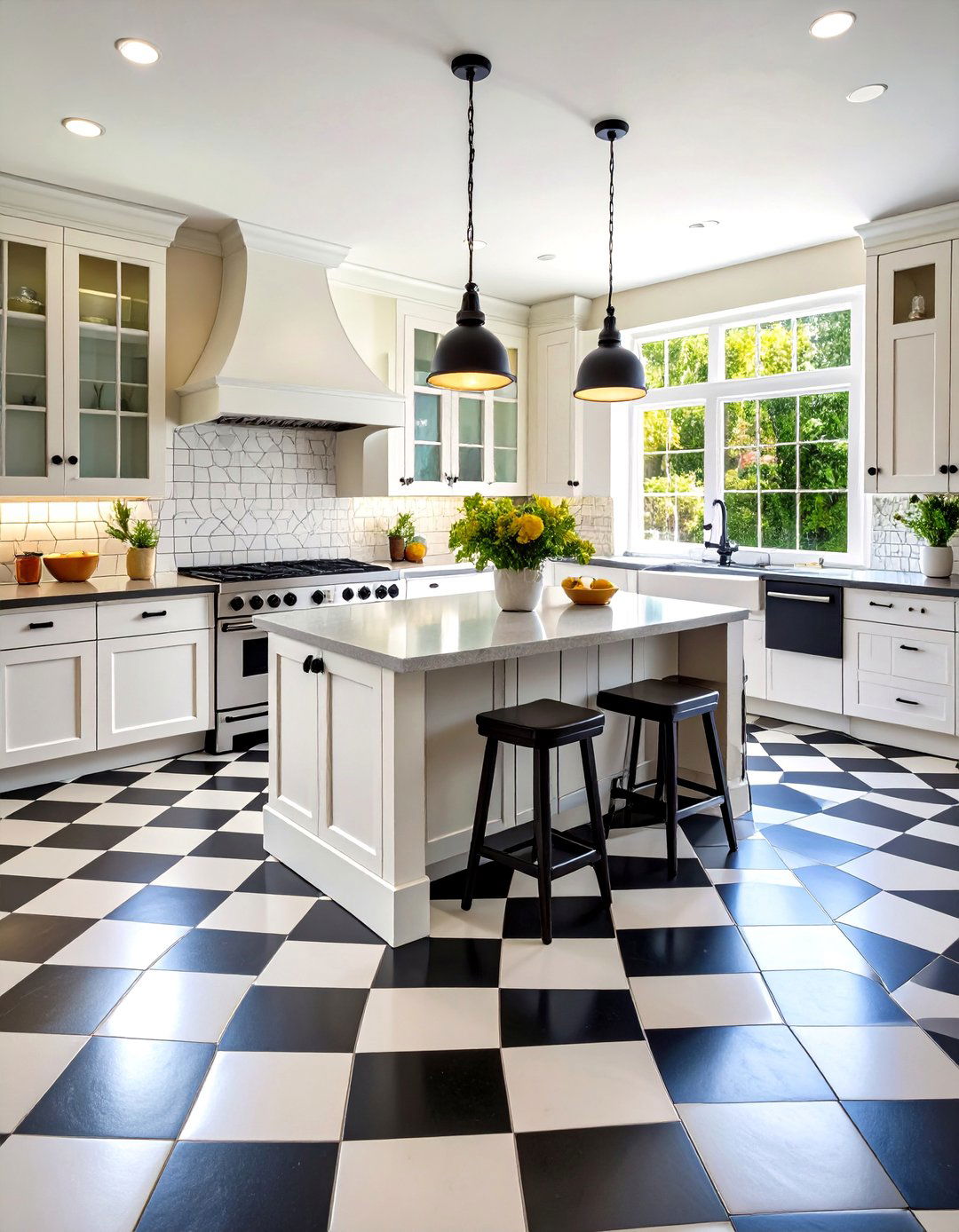
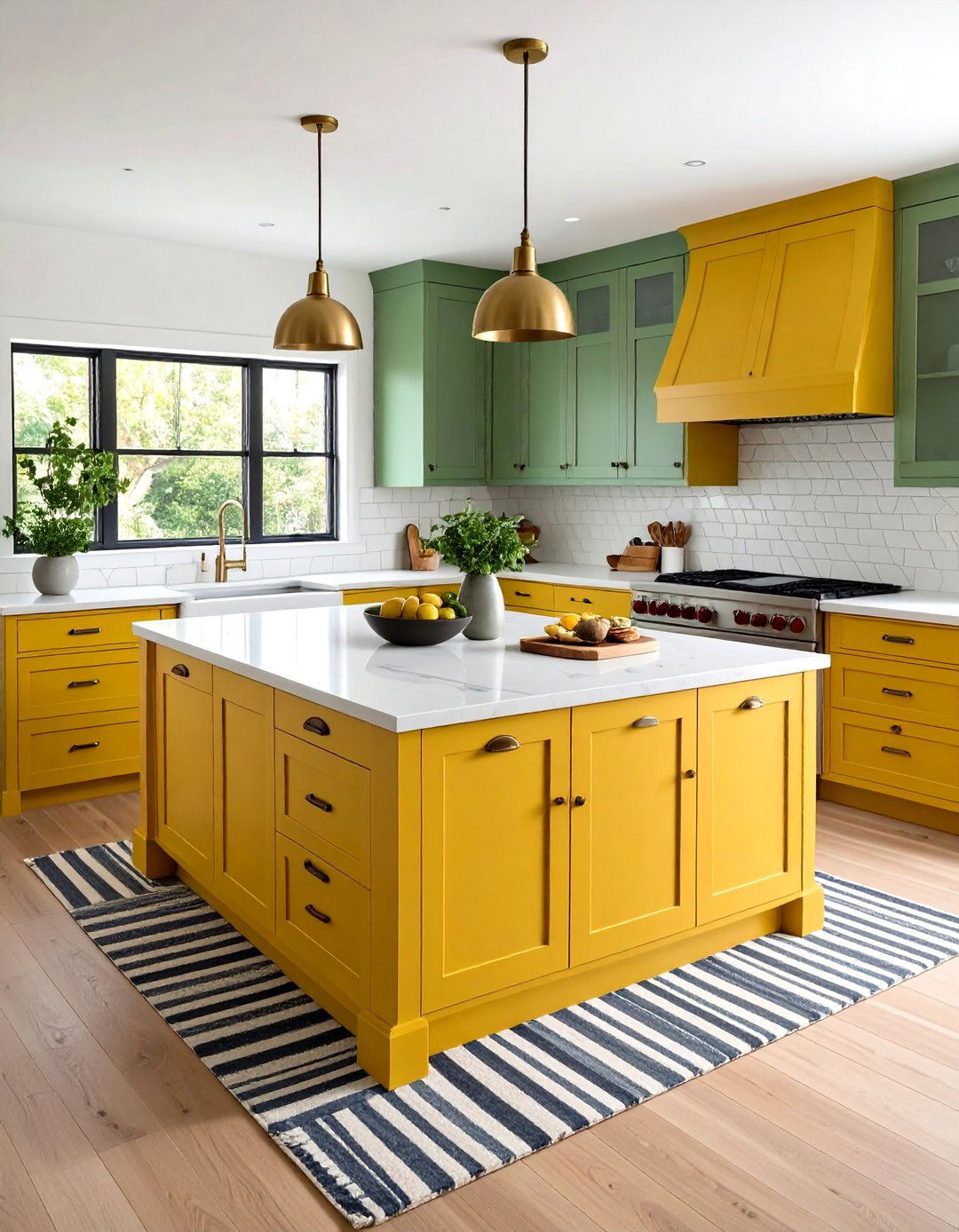
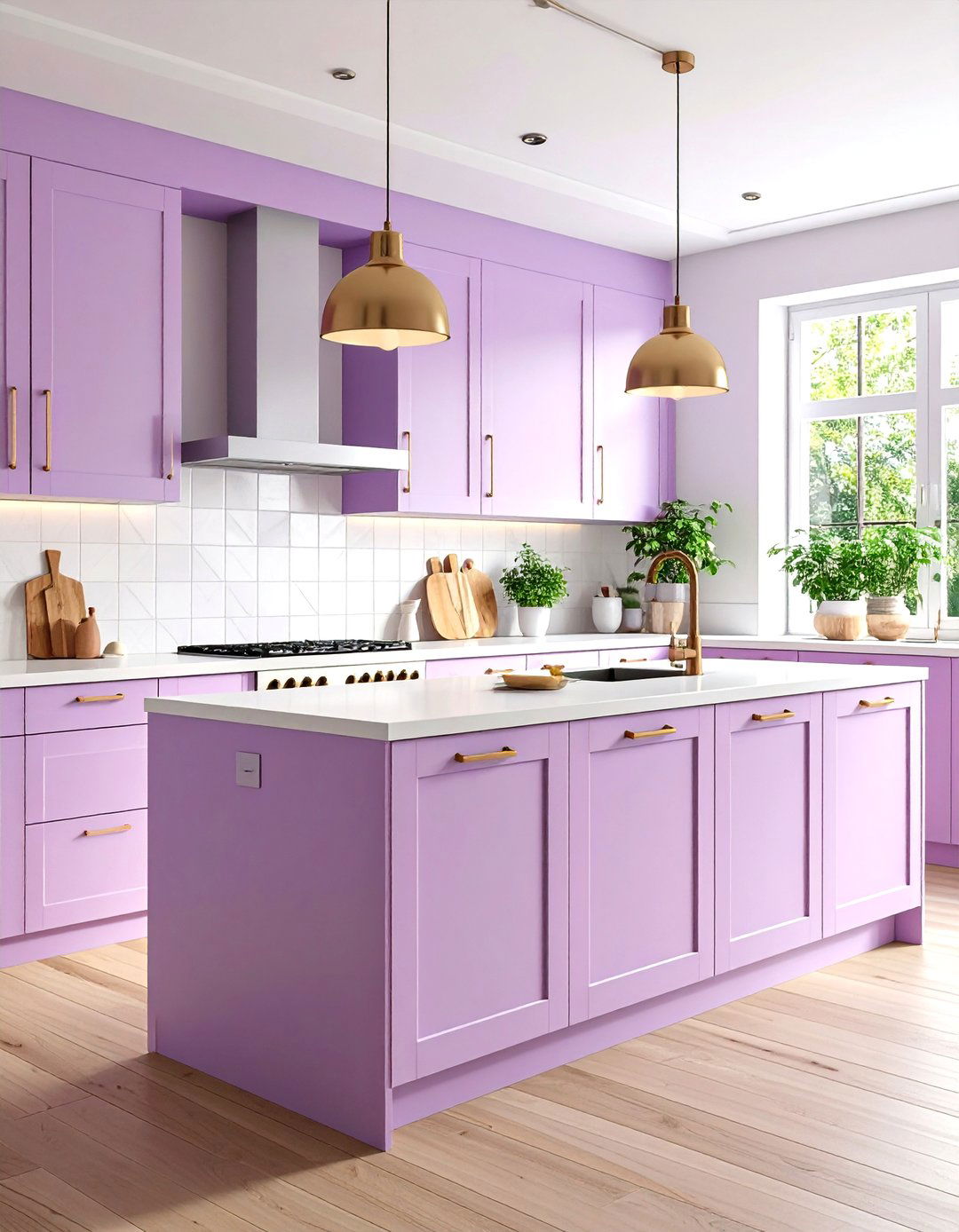
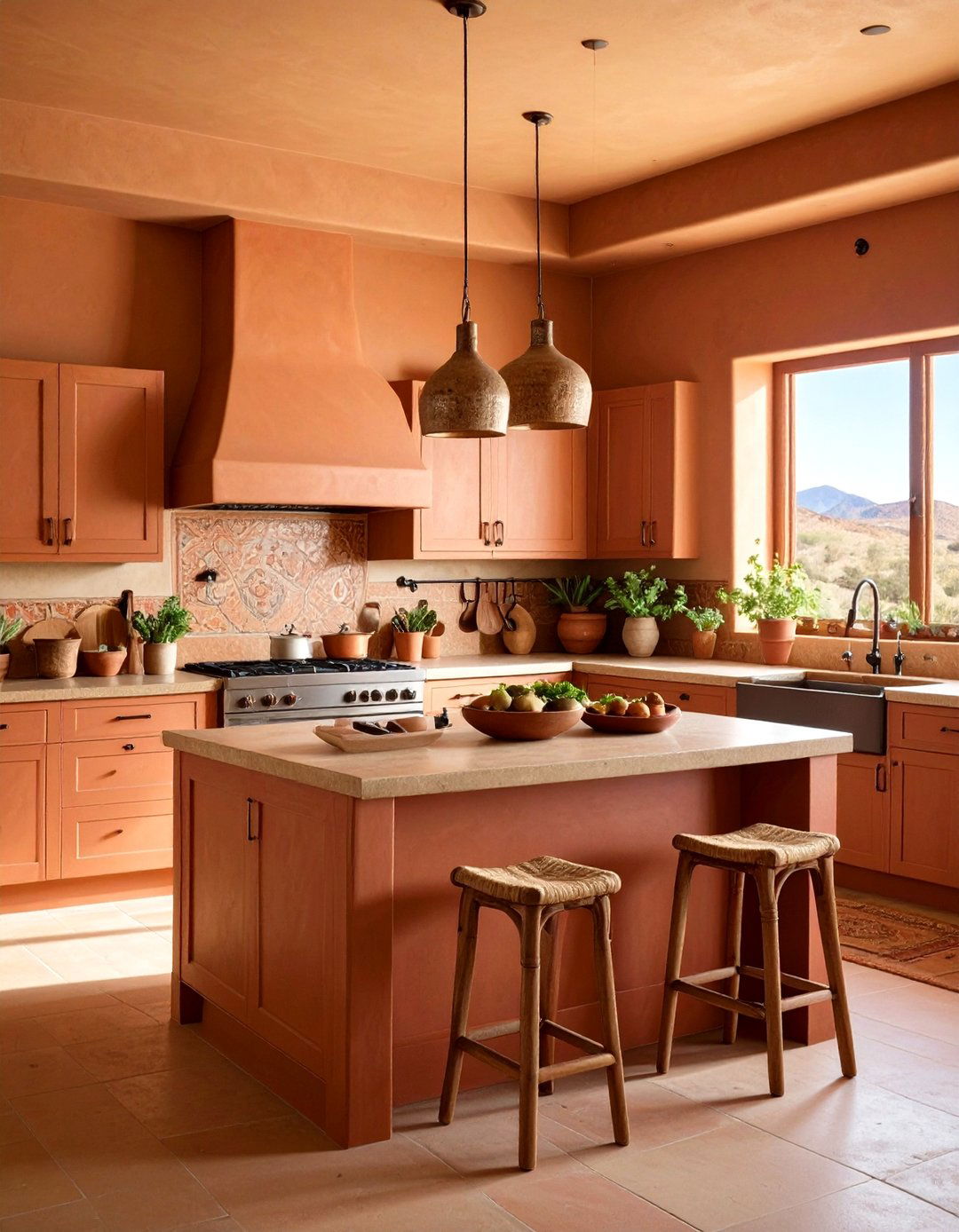


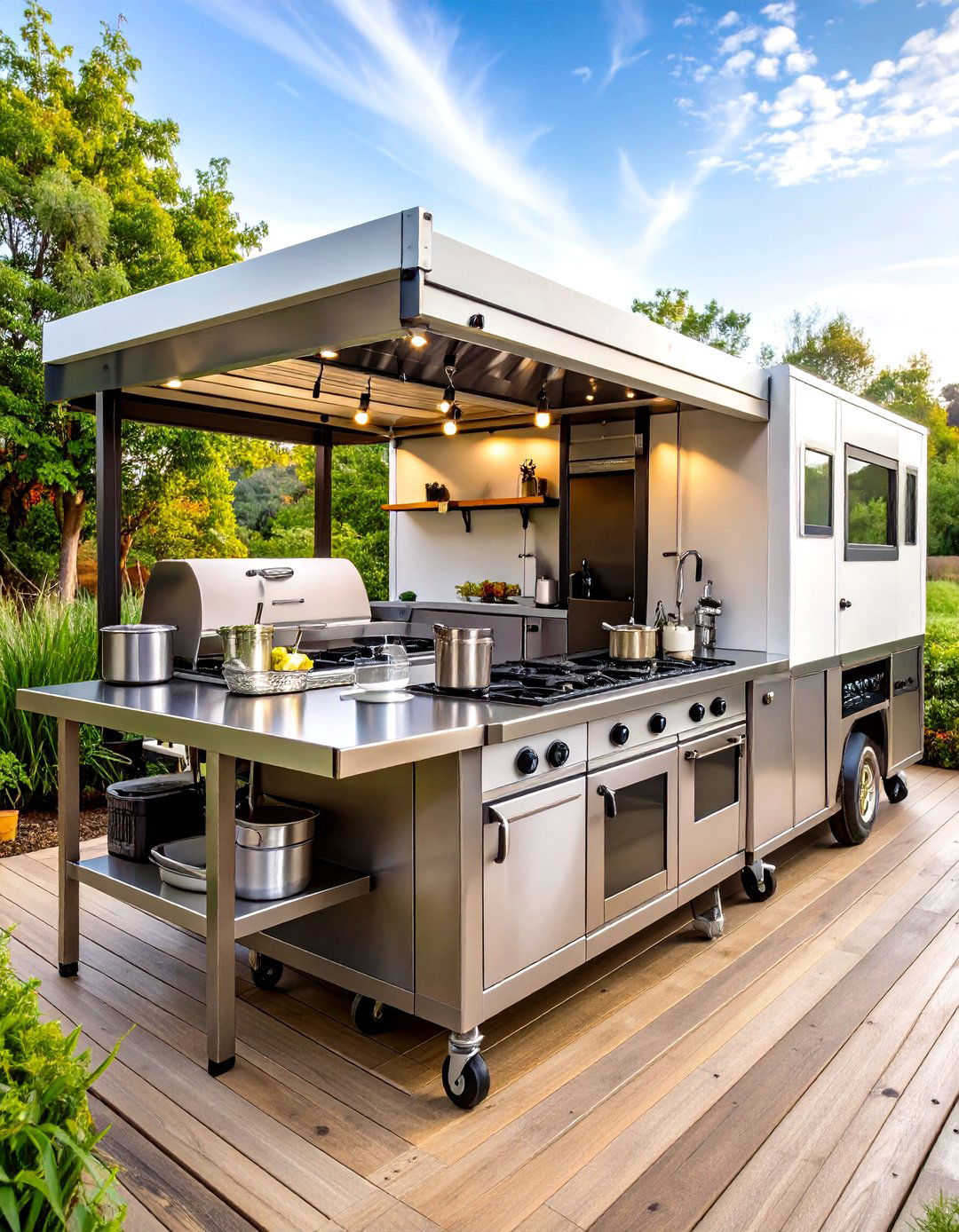
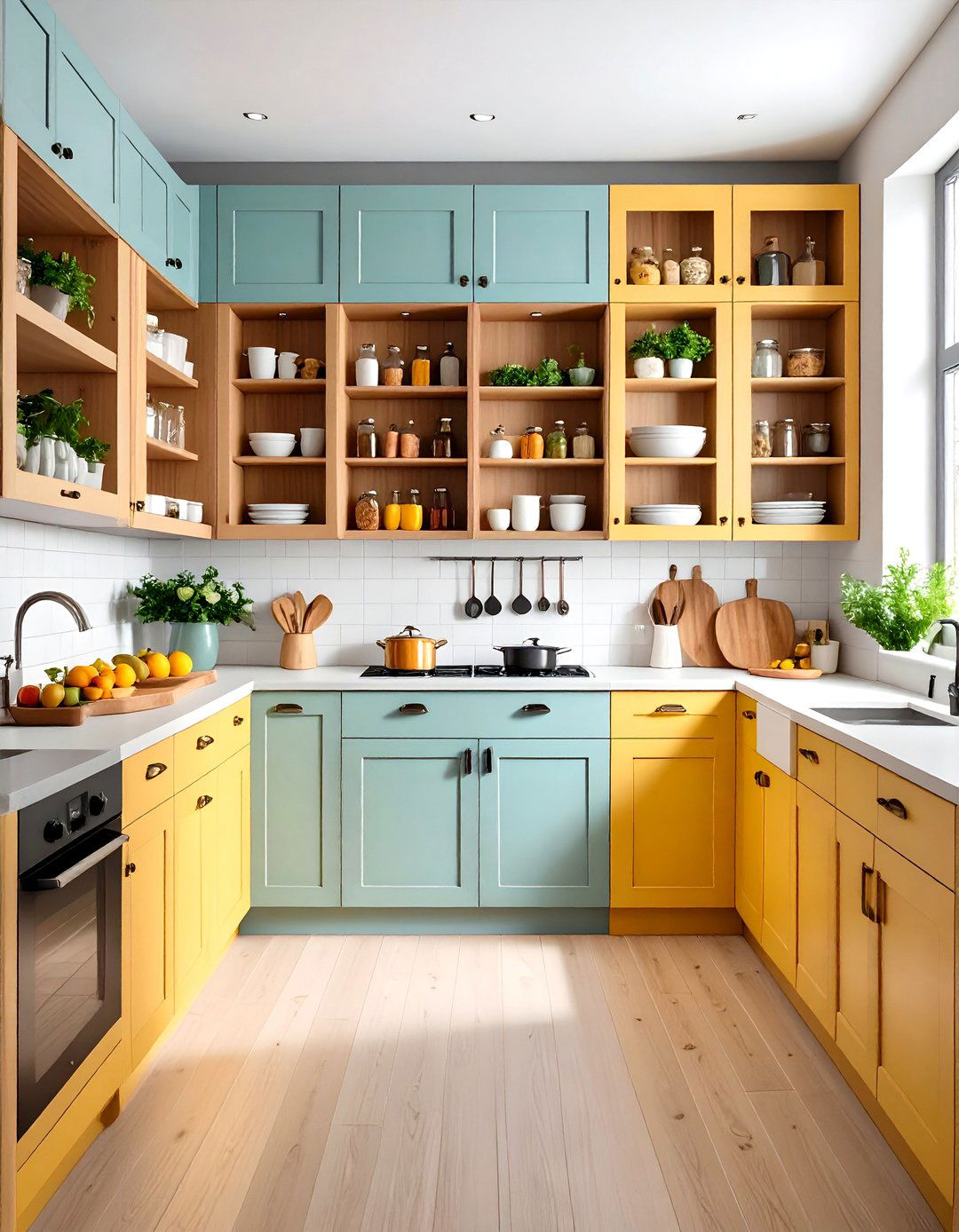
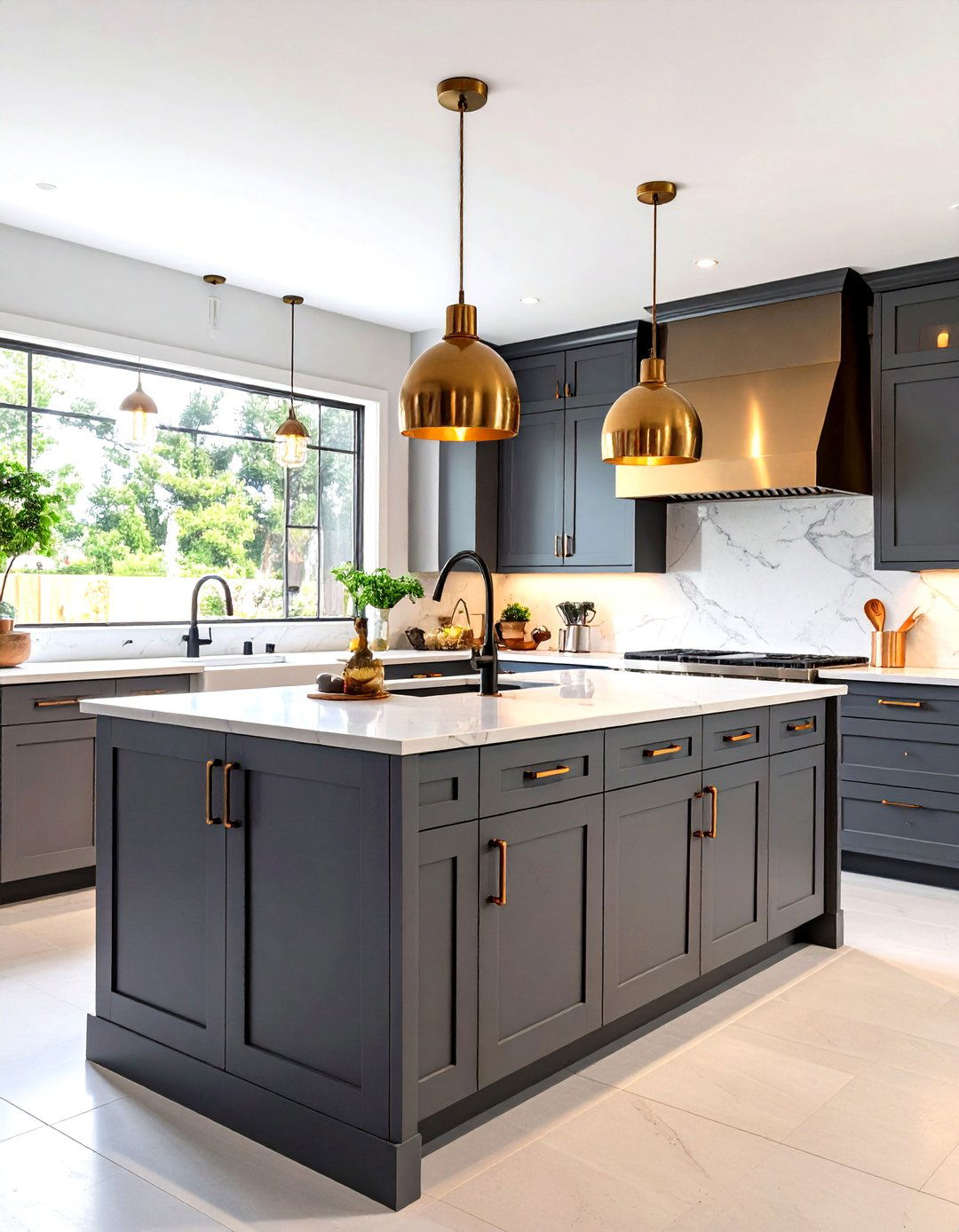
Leave a Reply